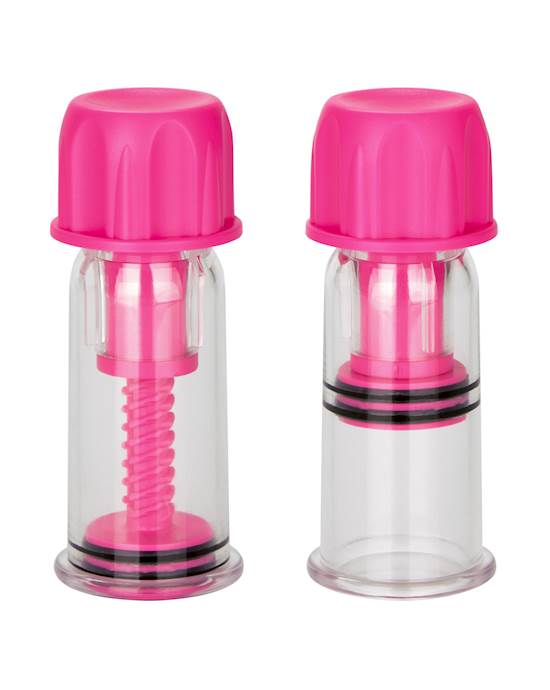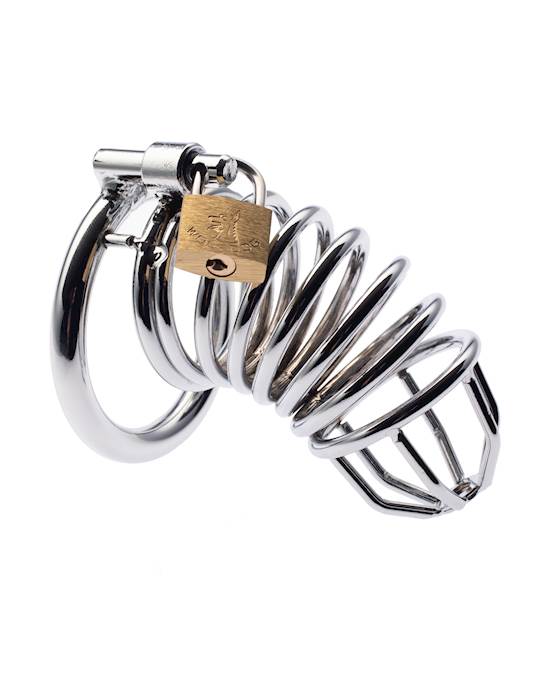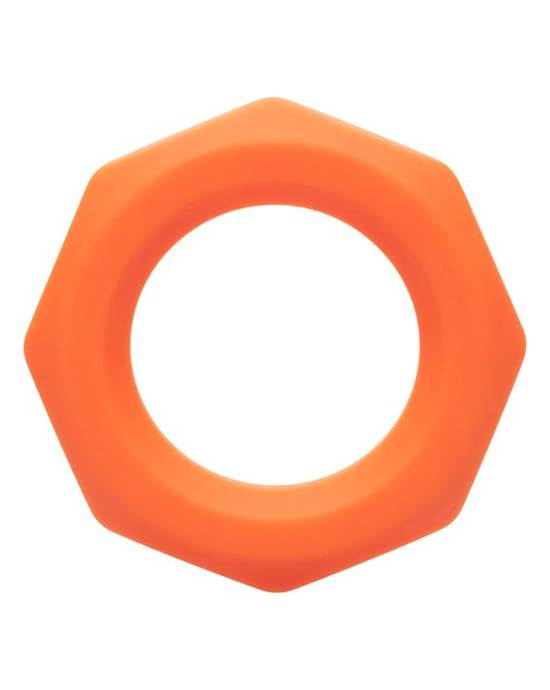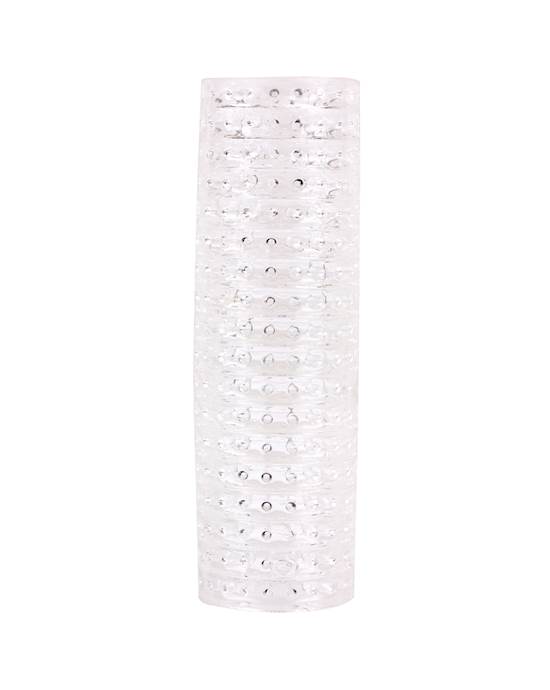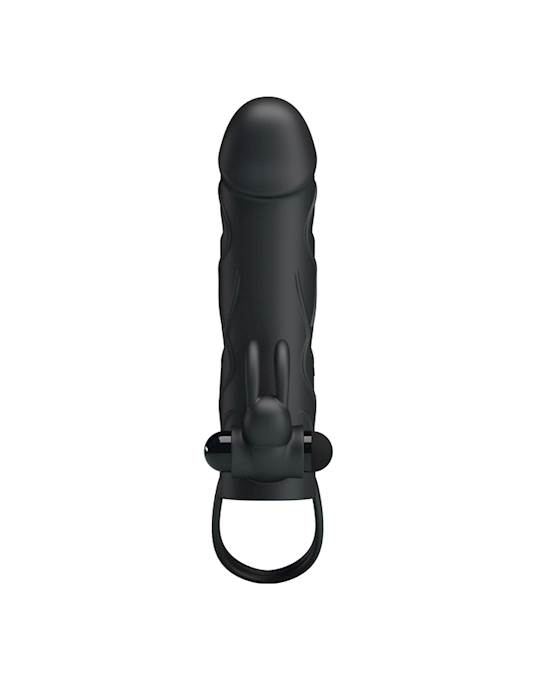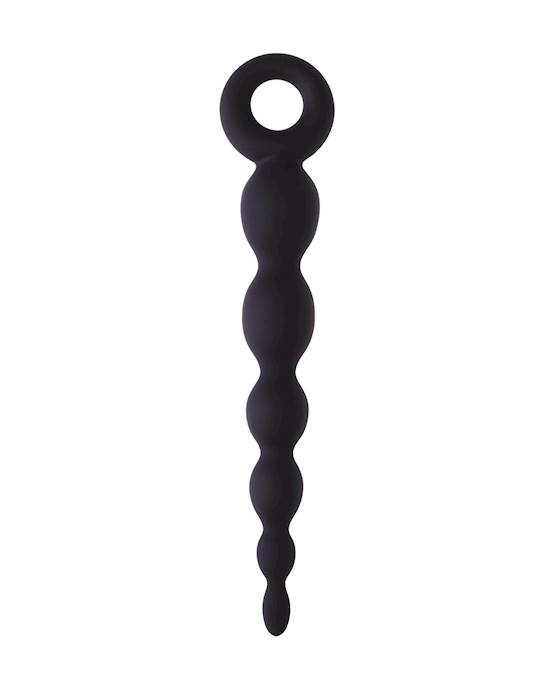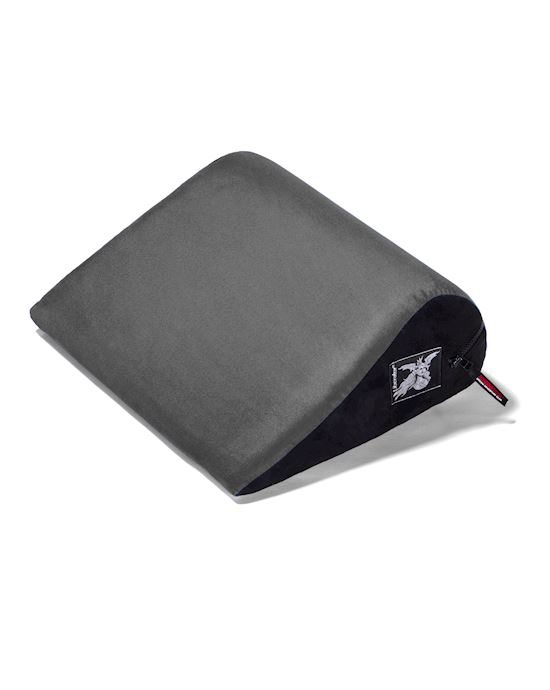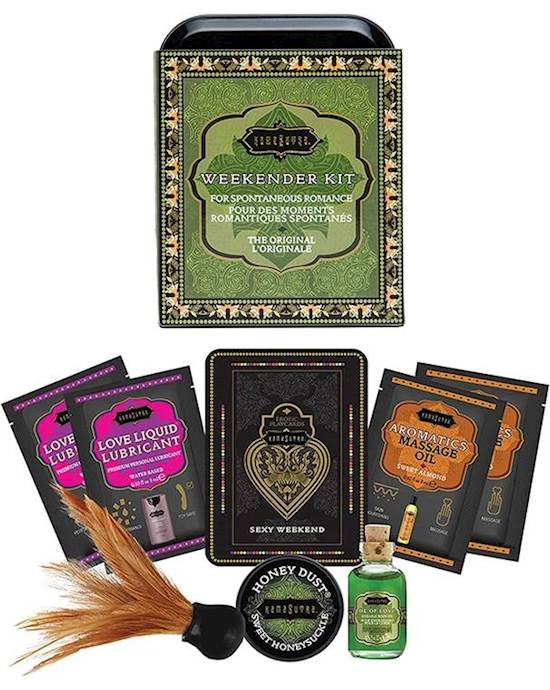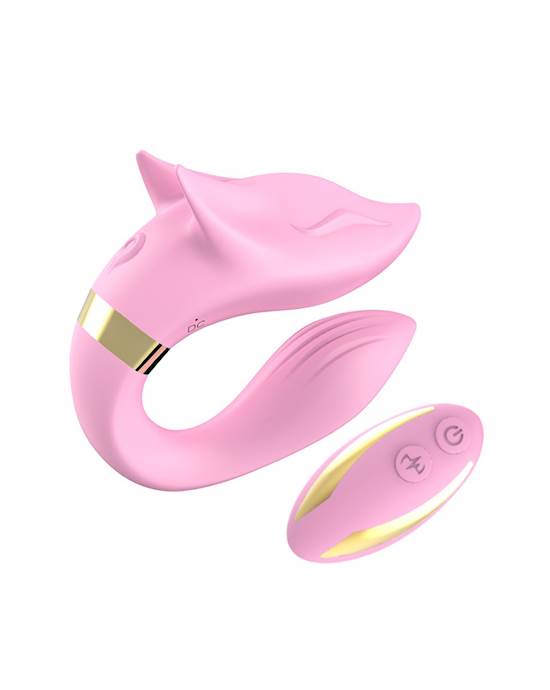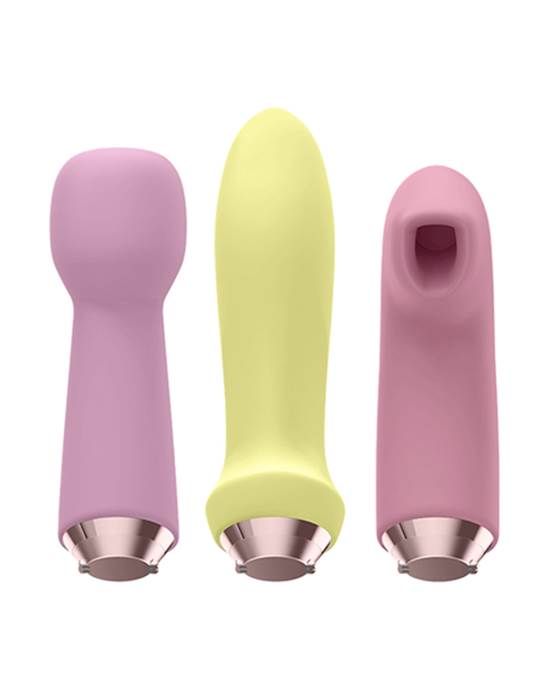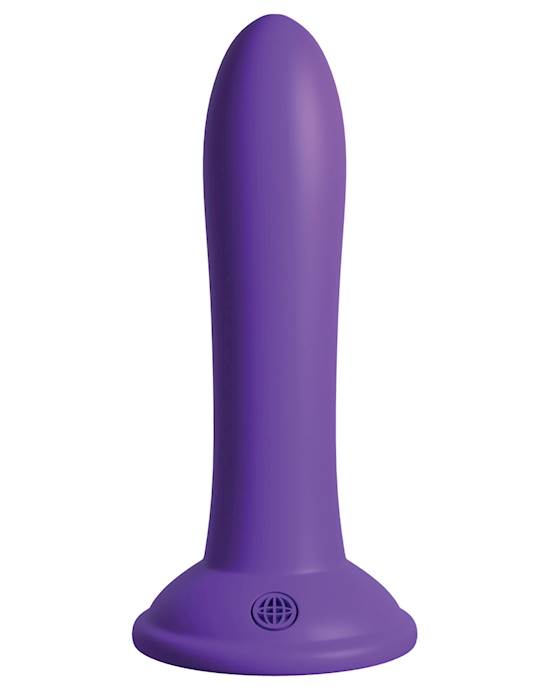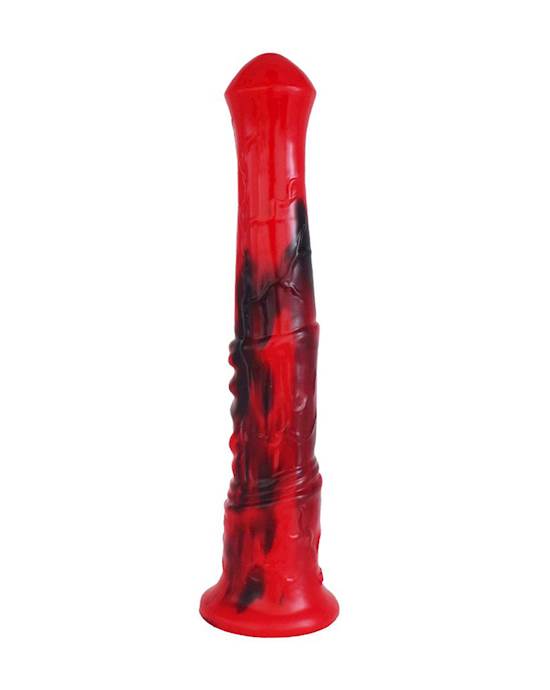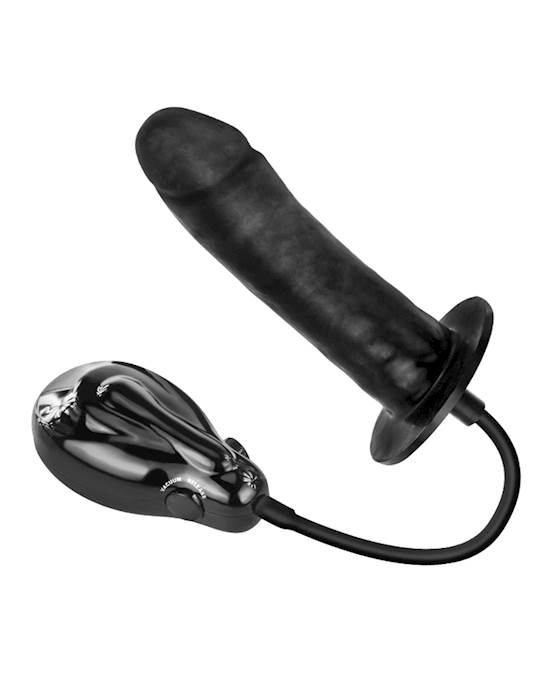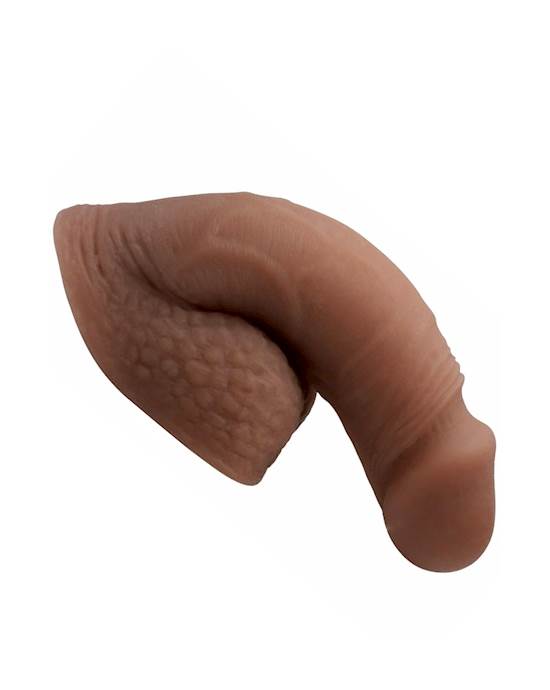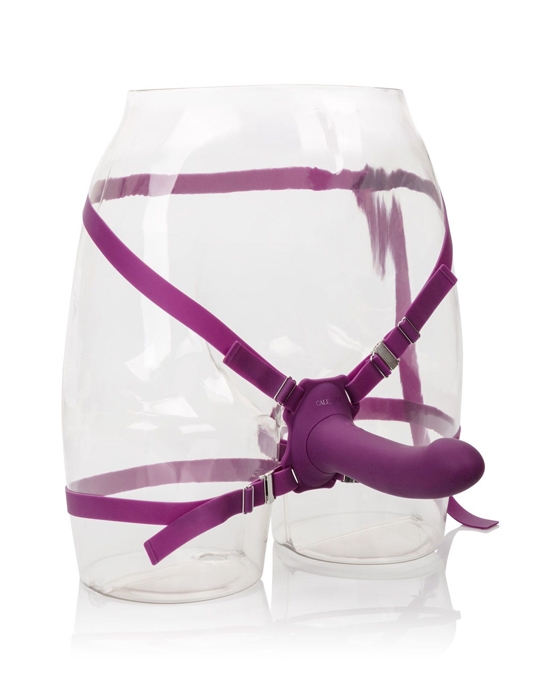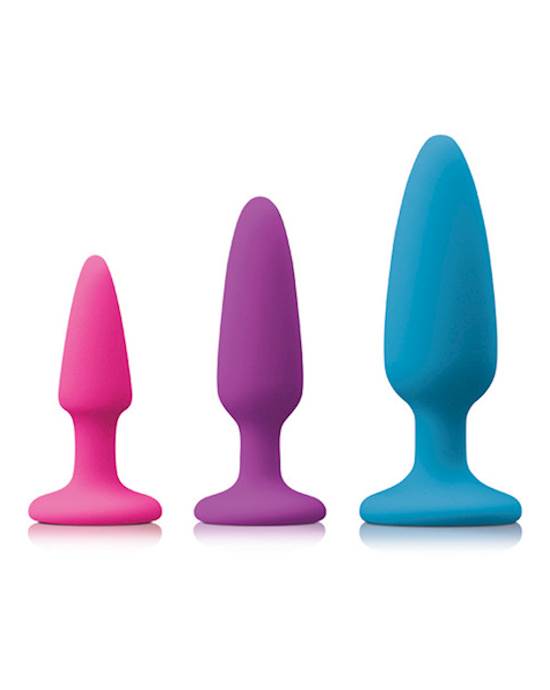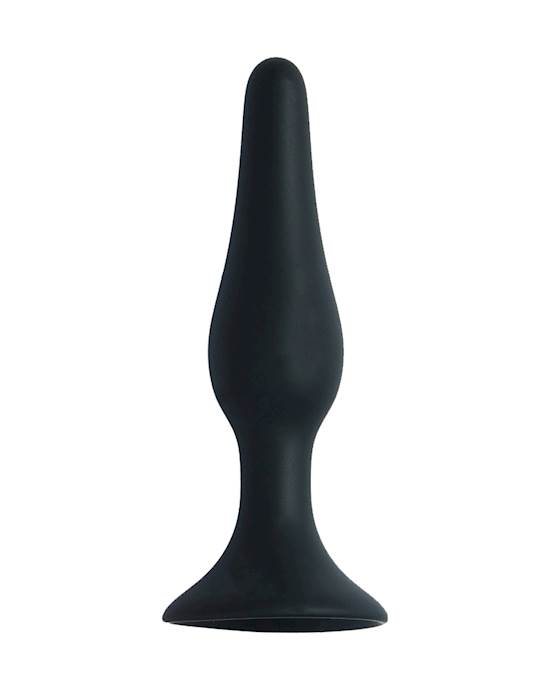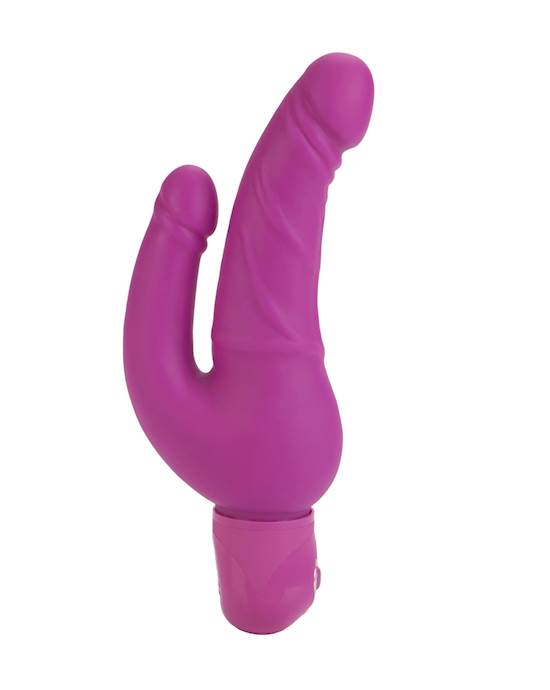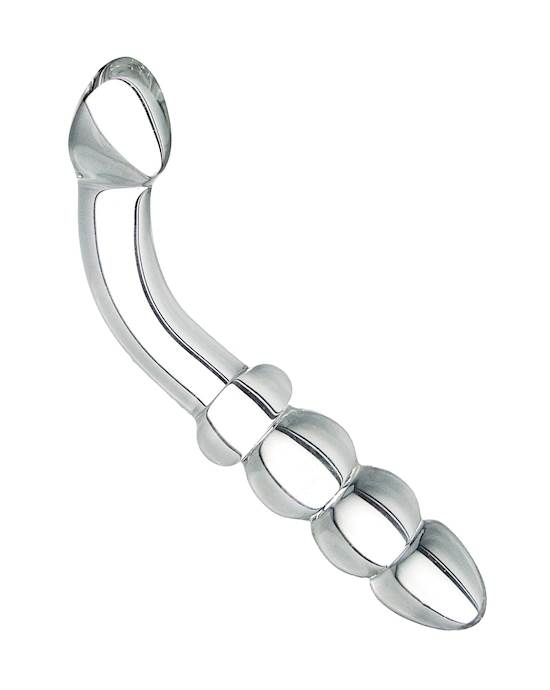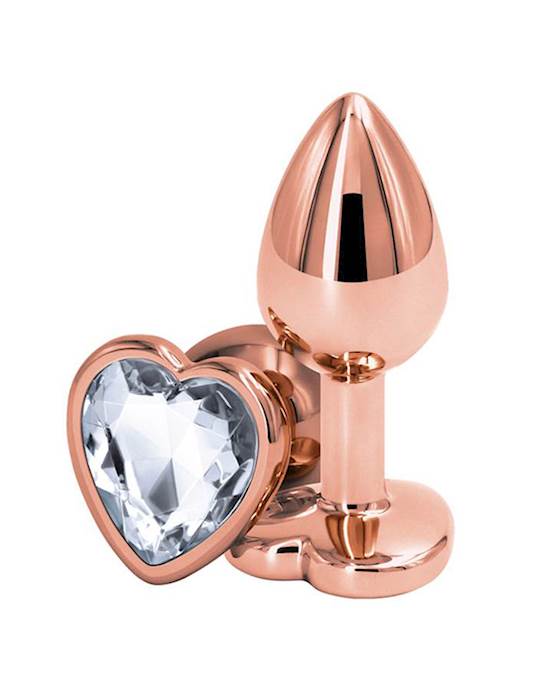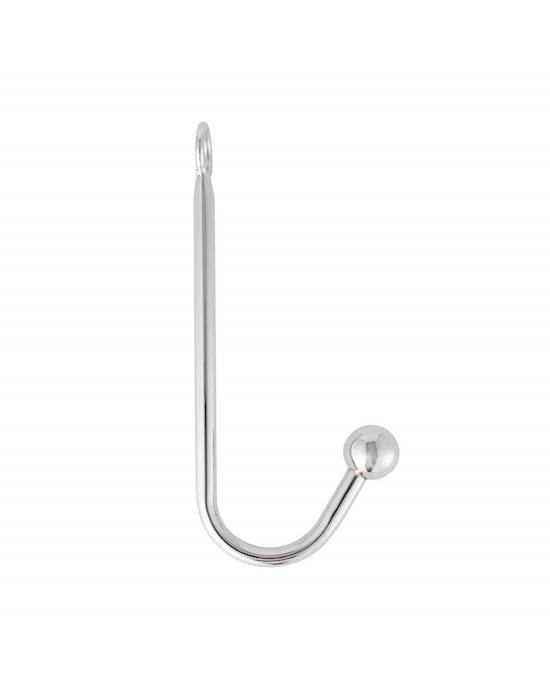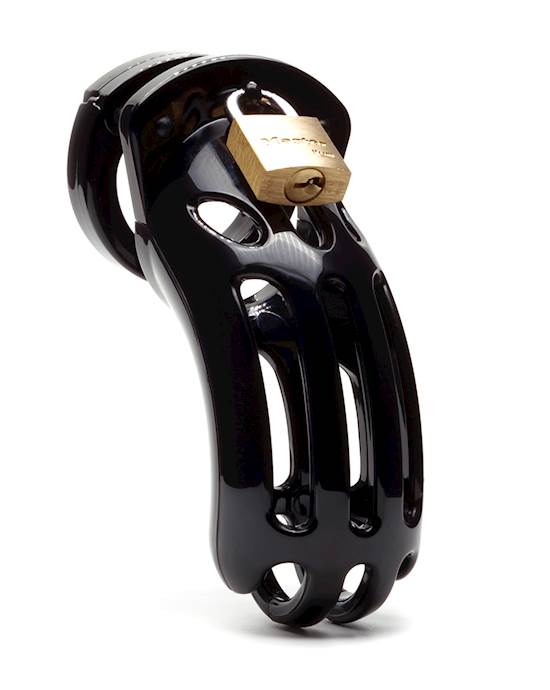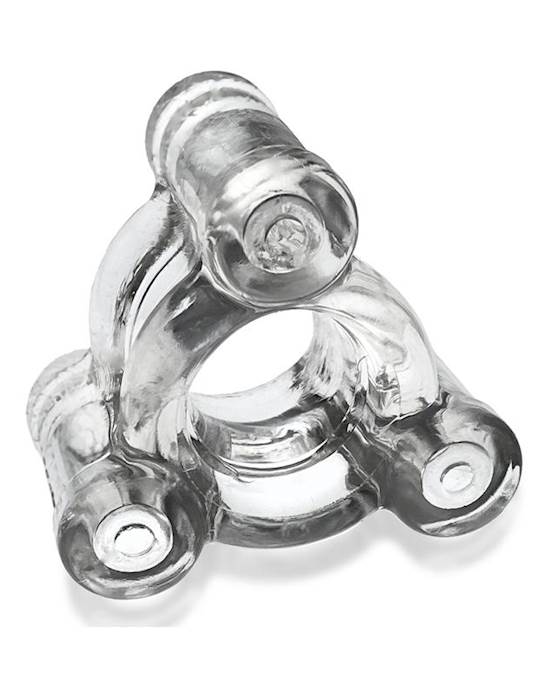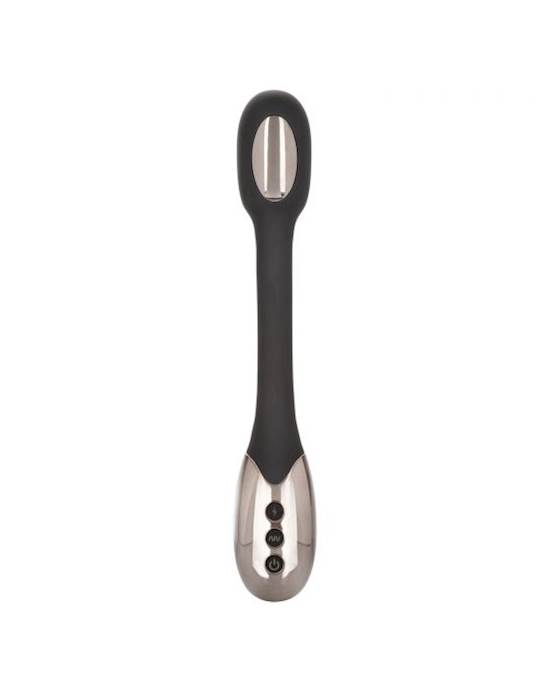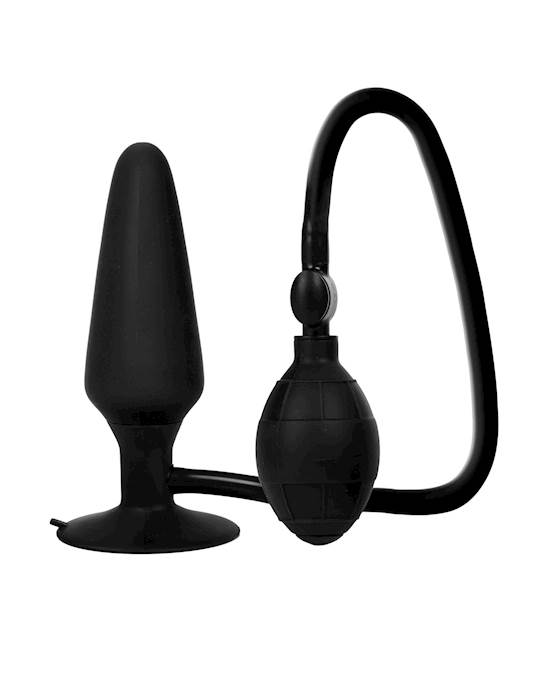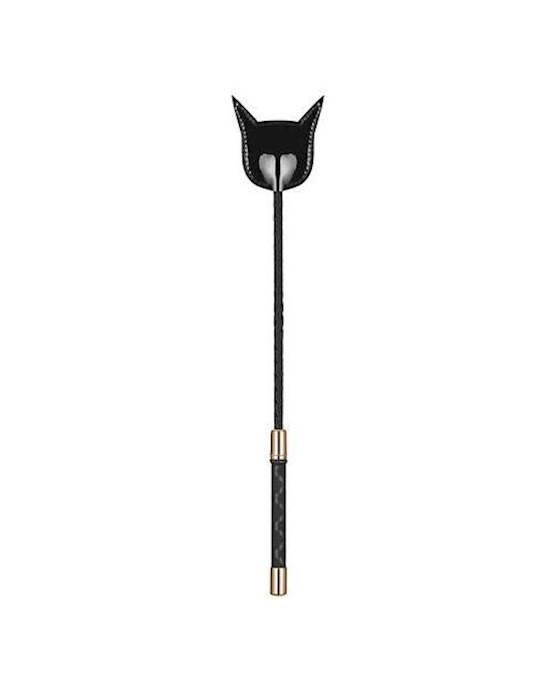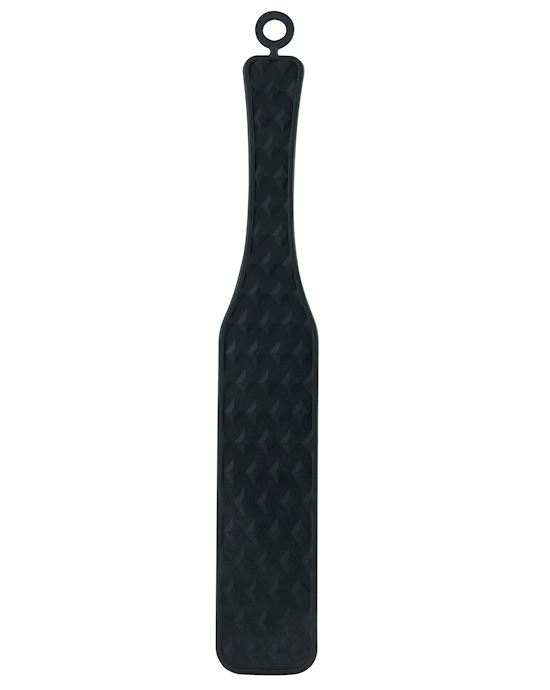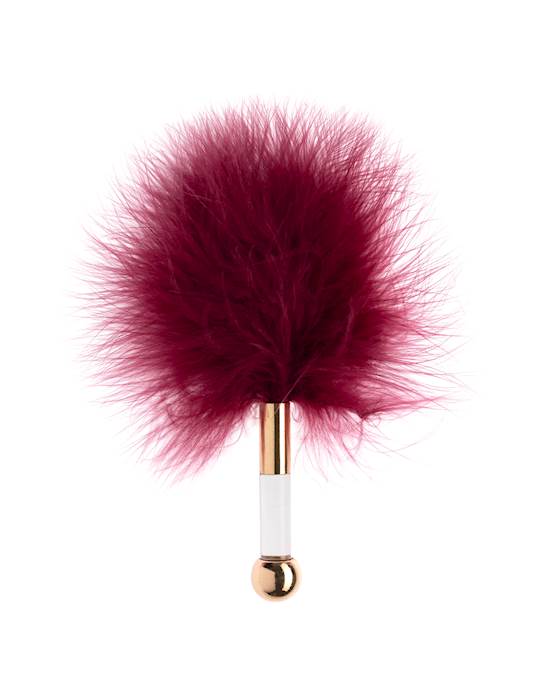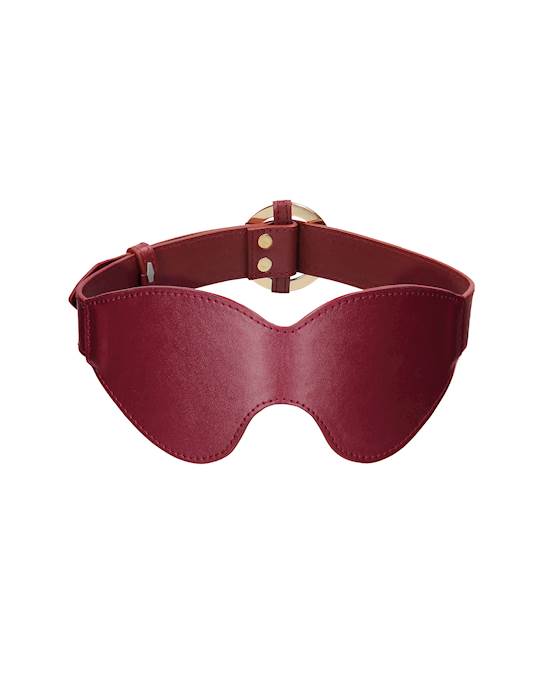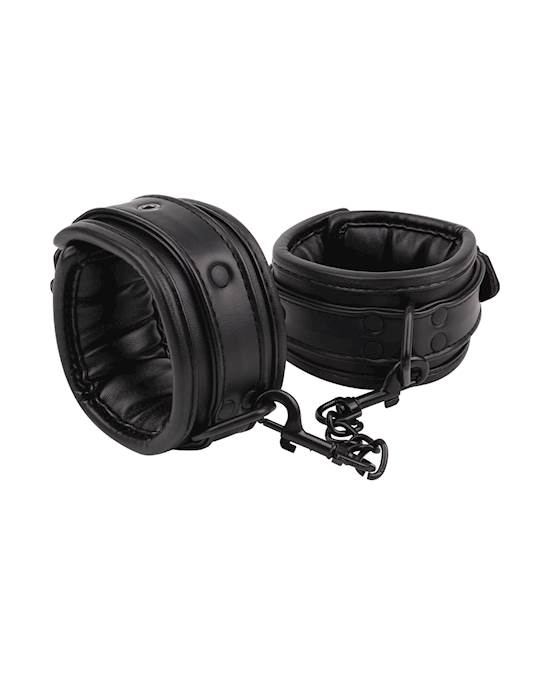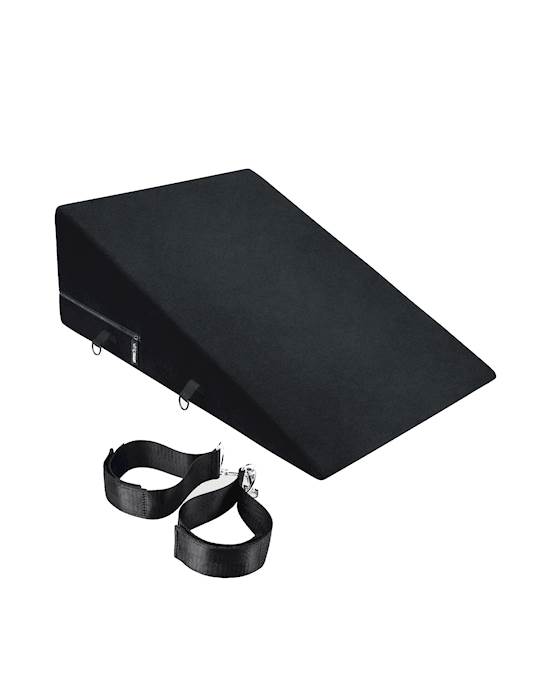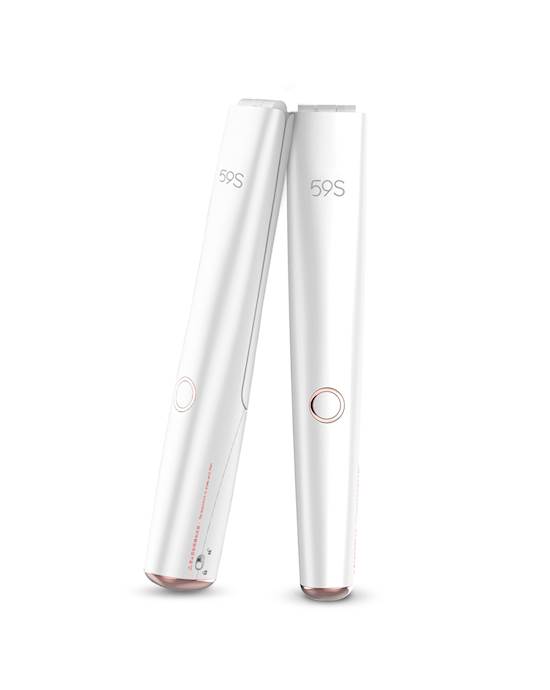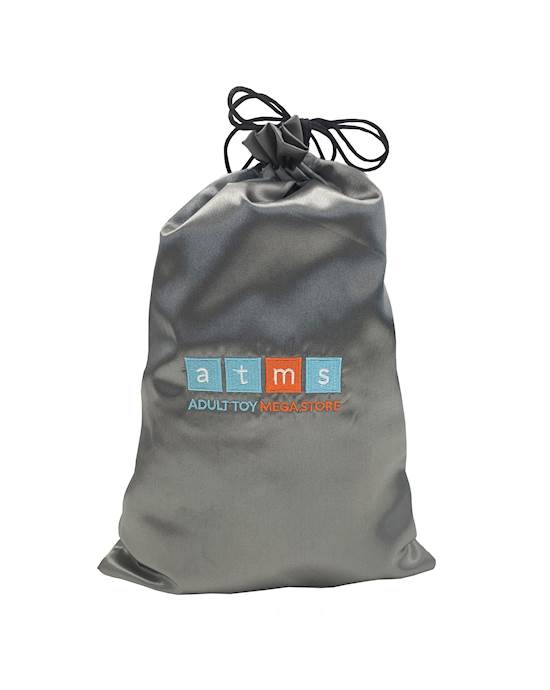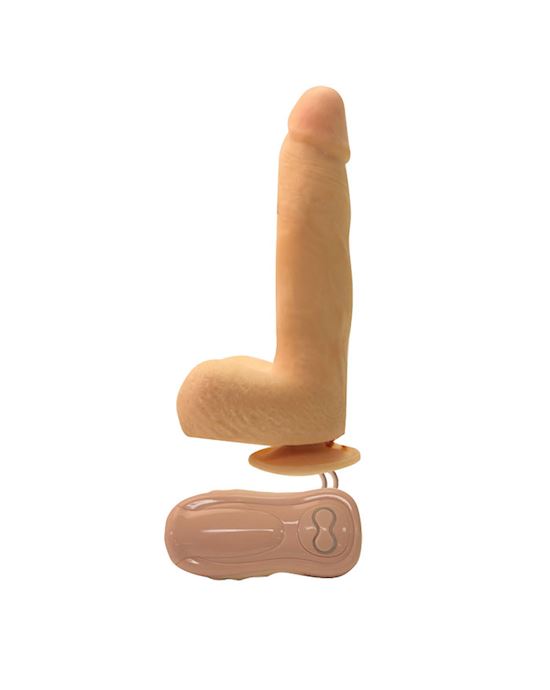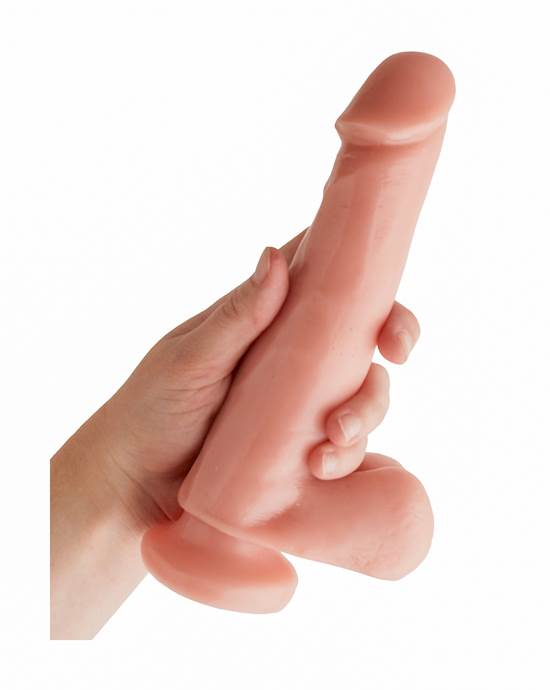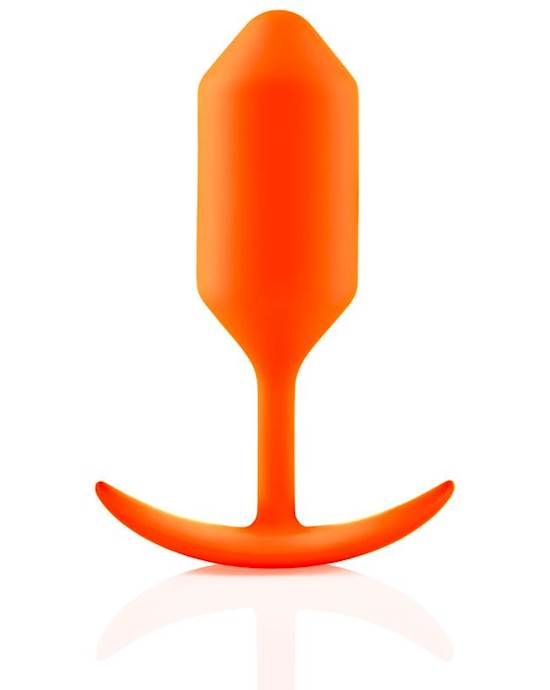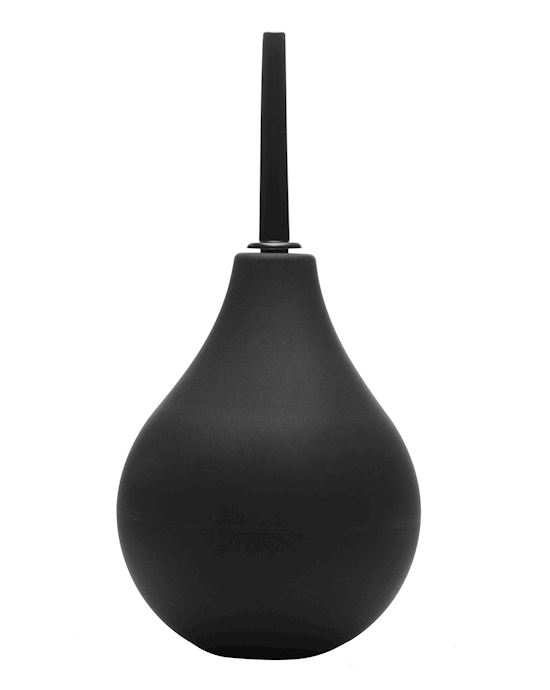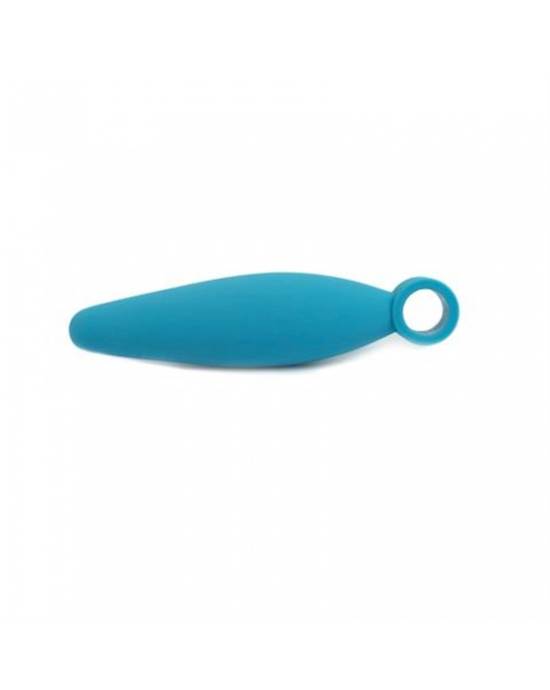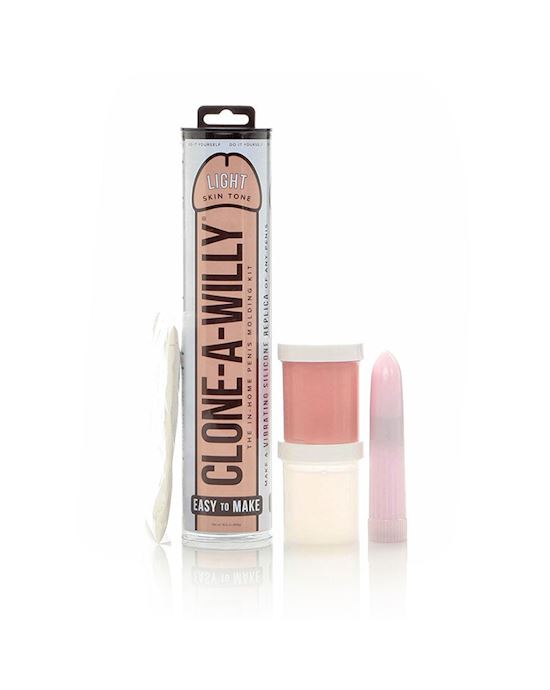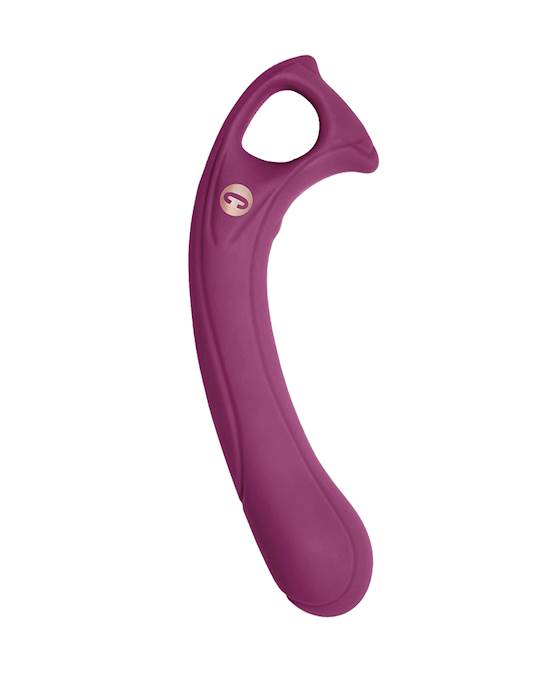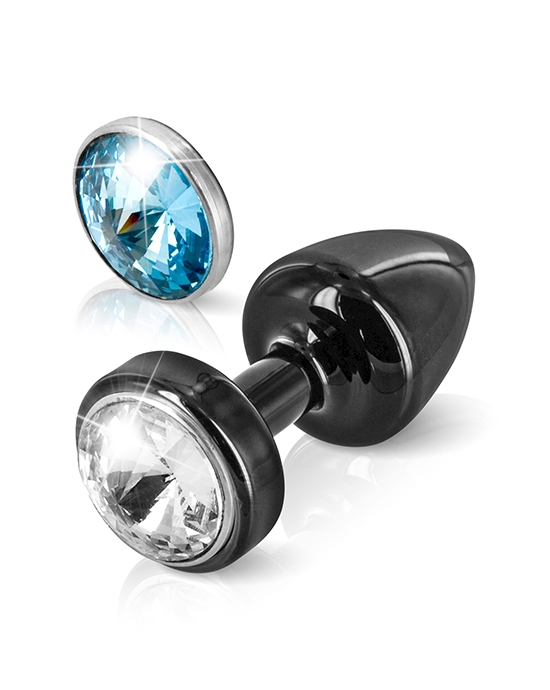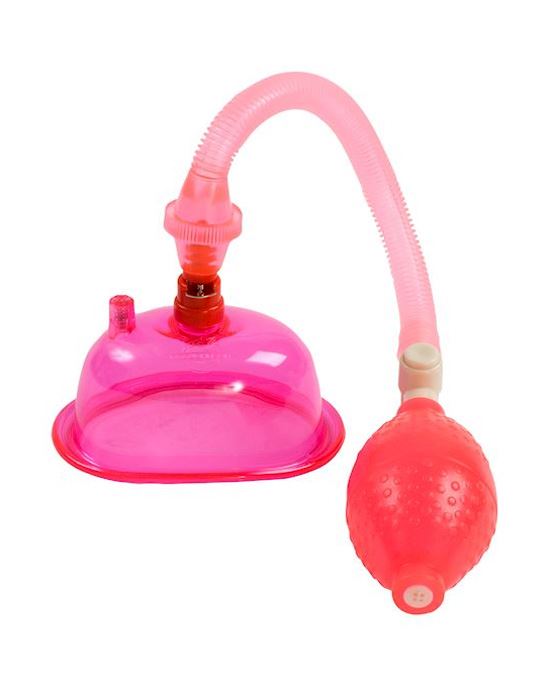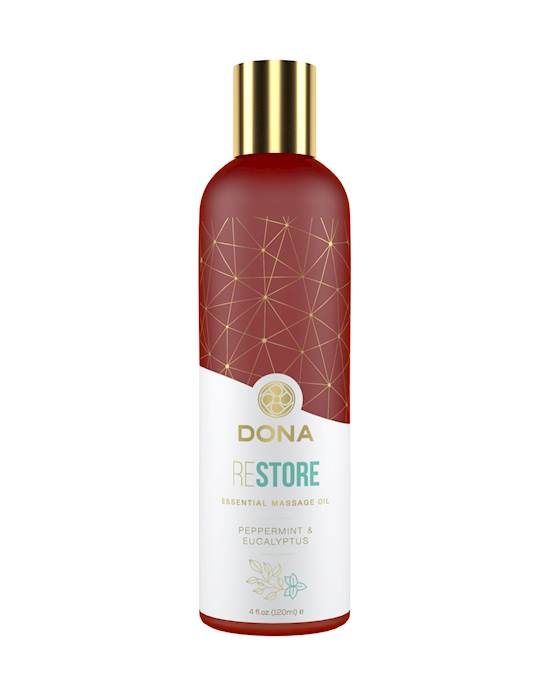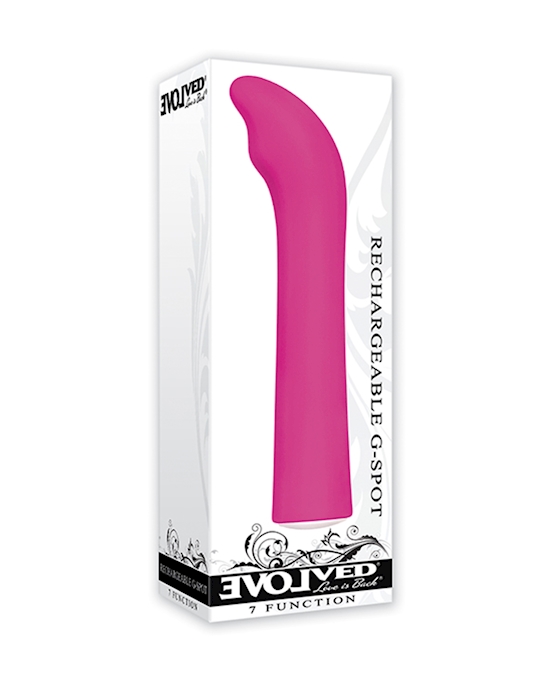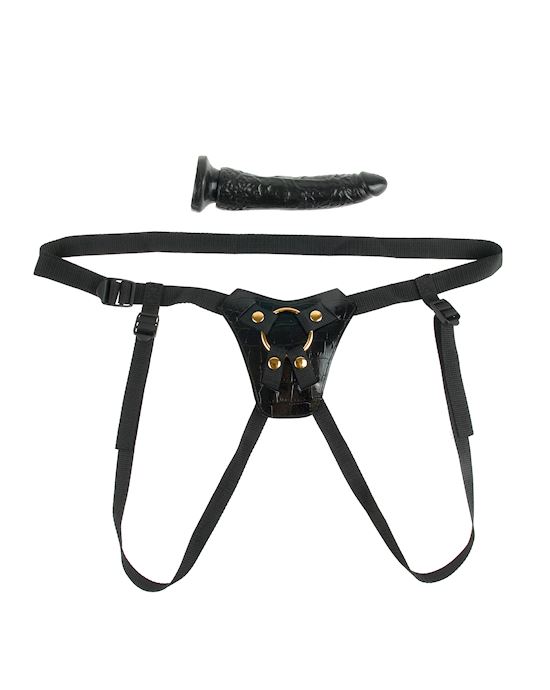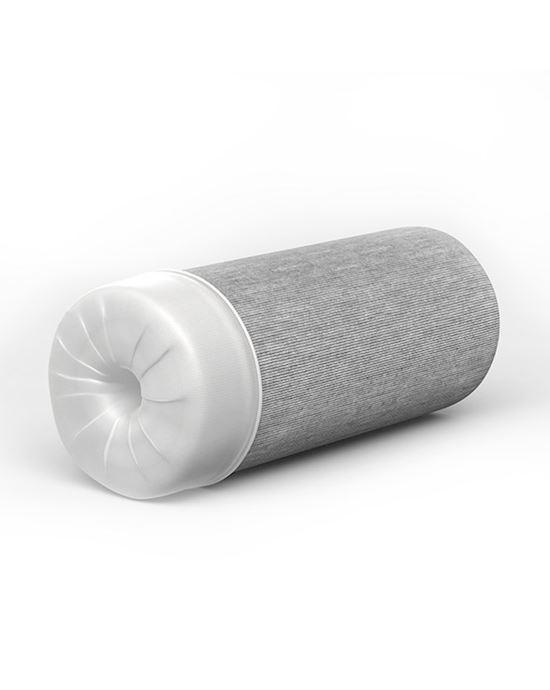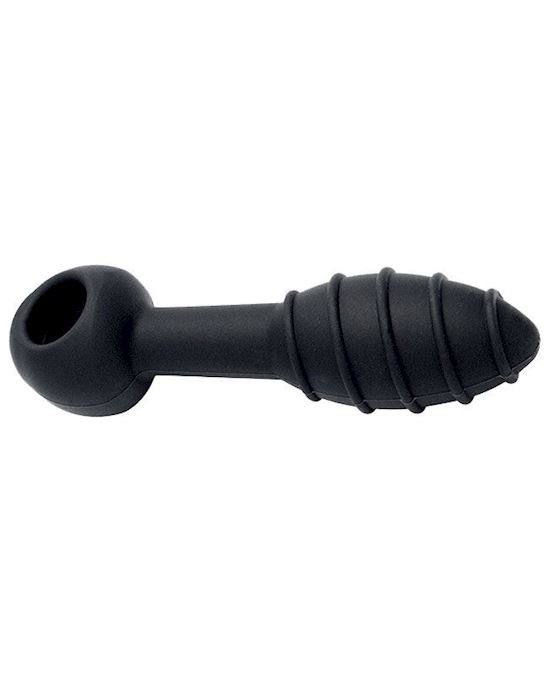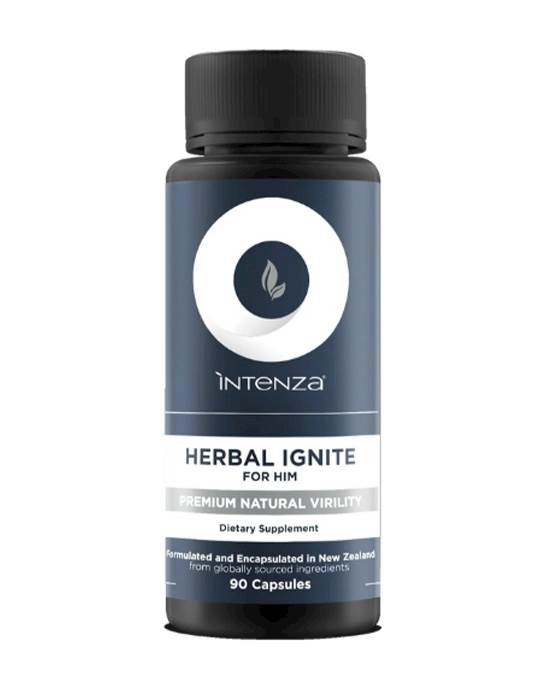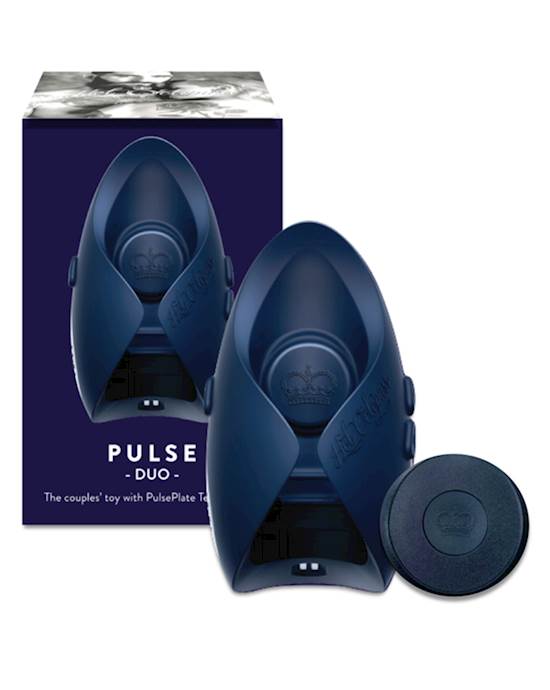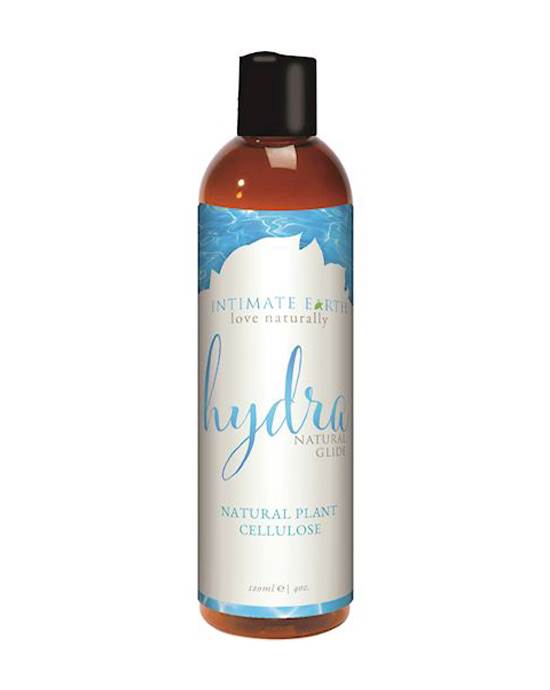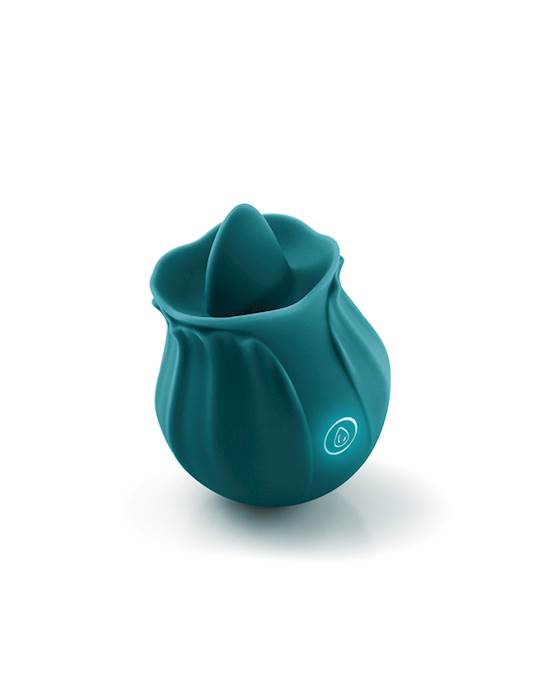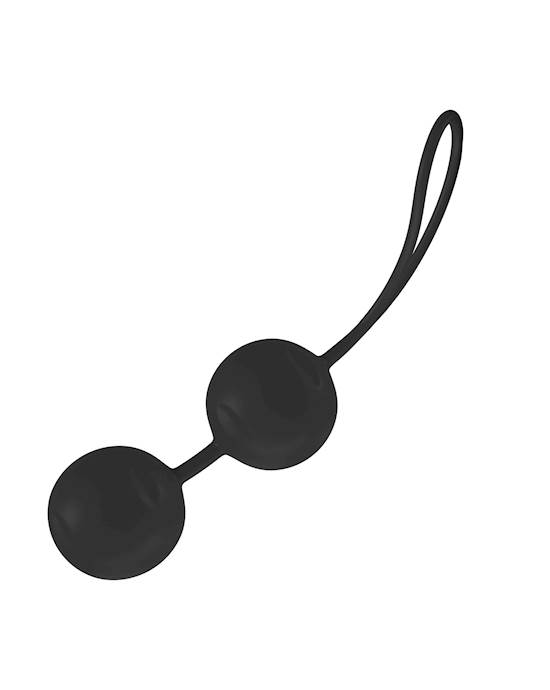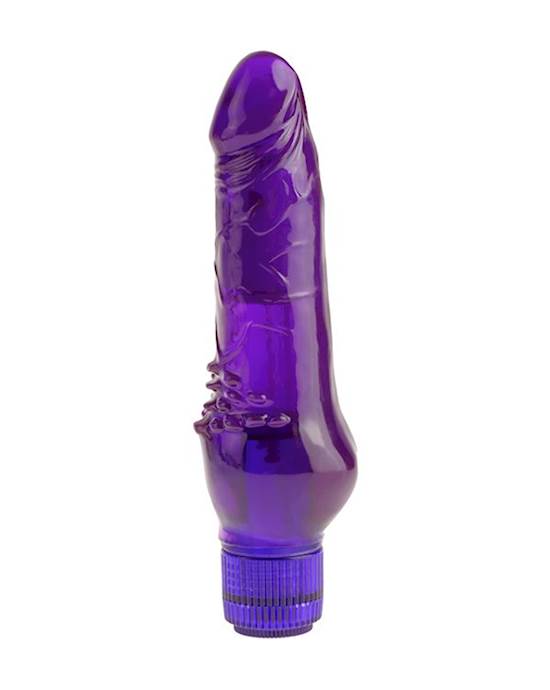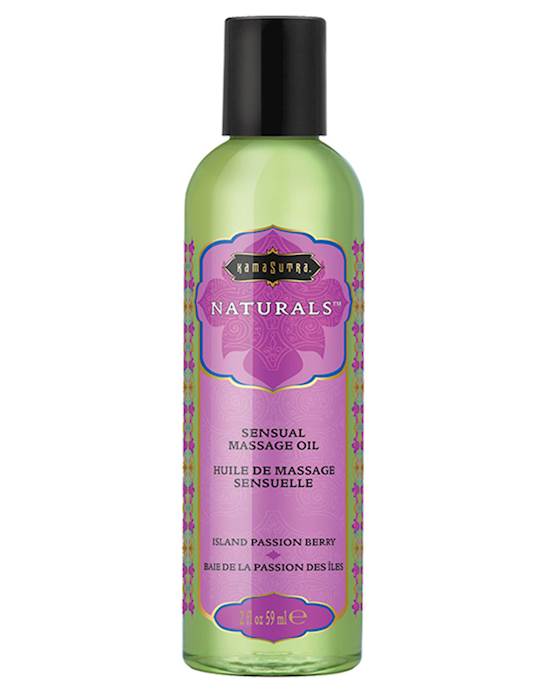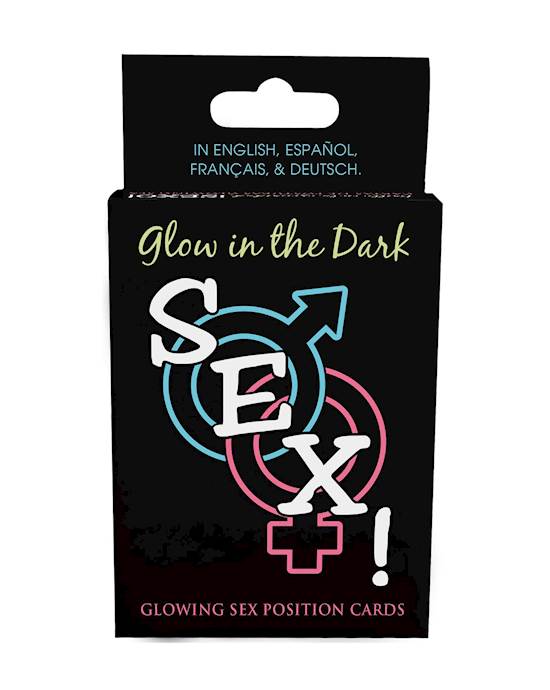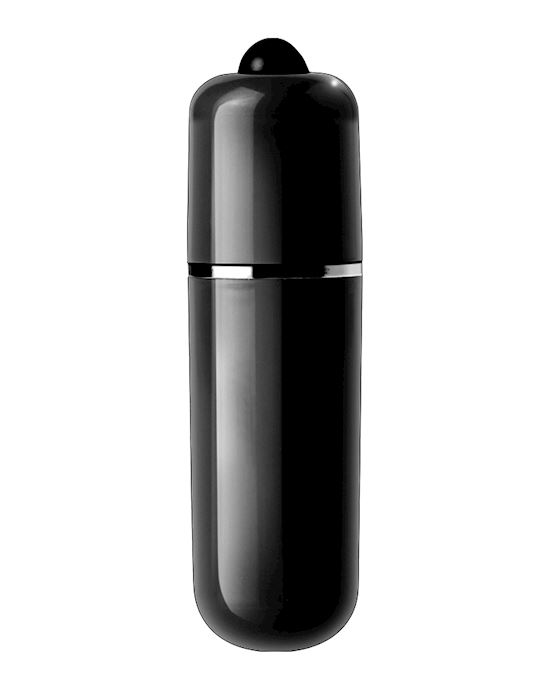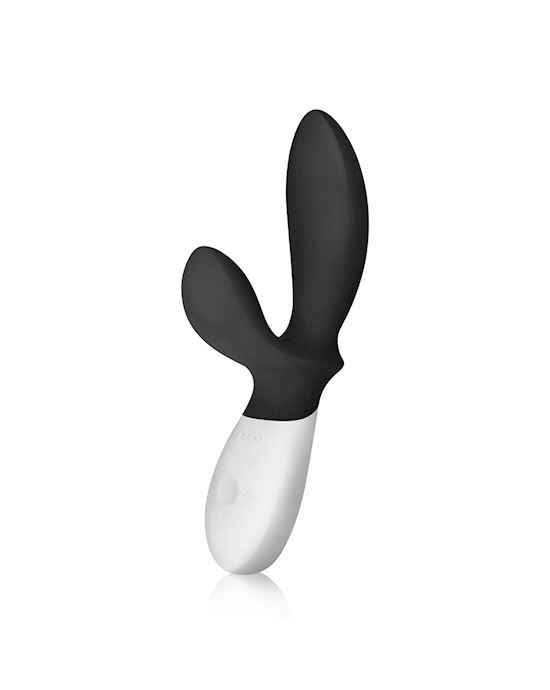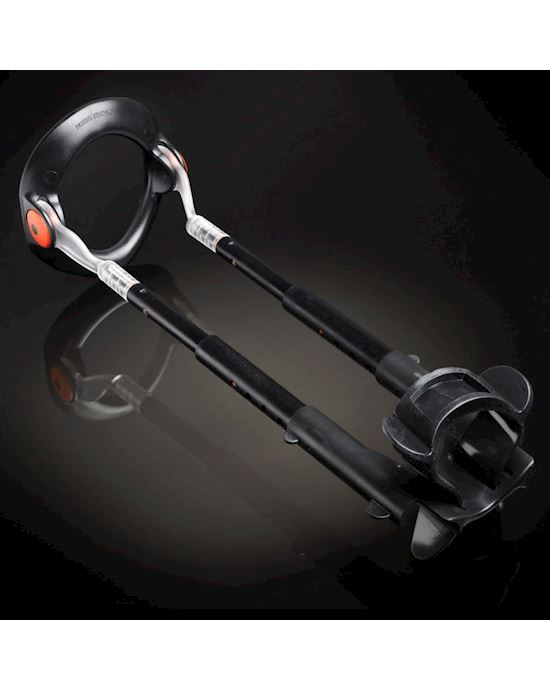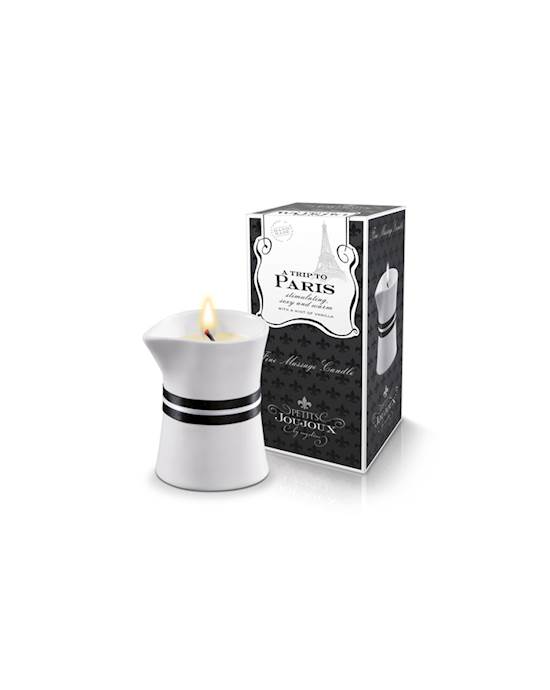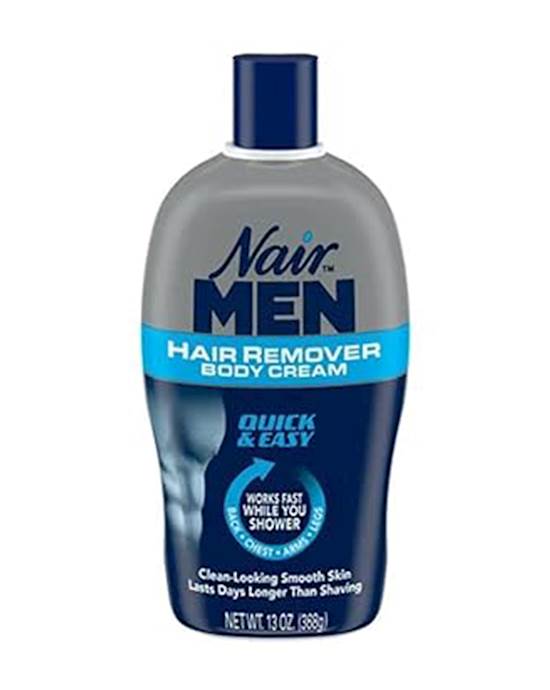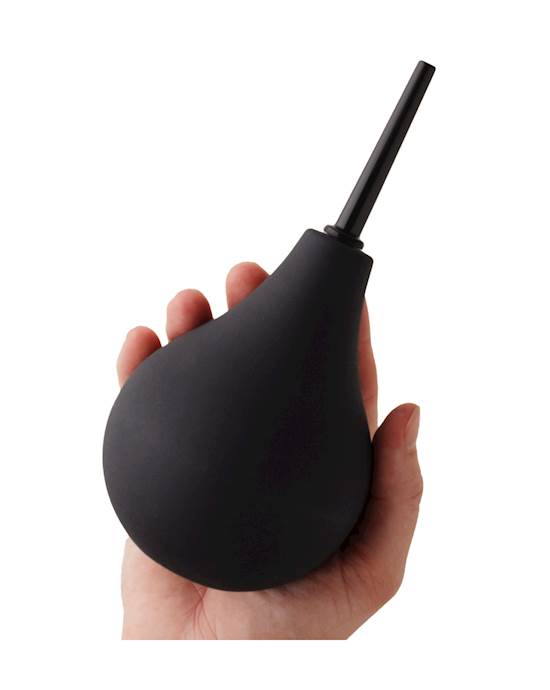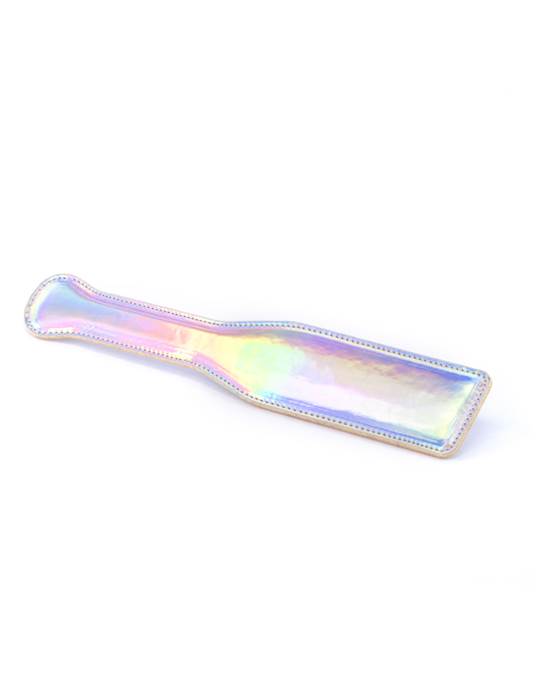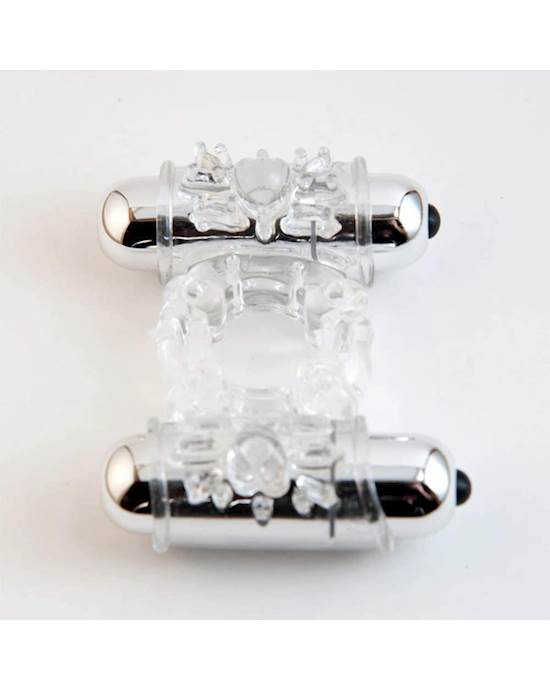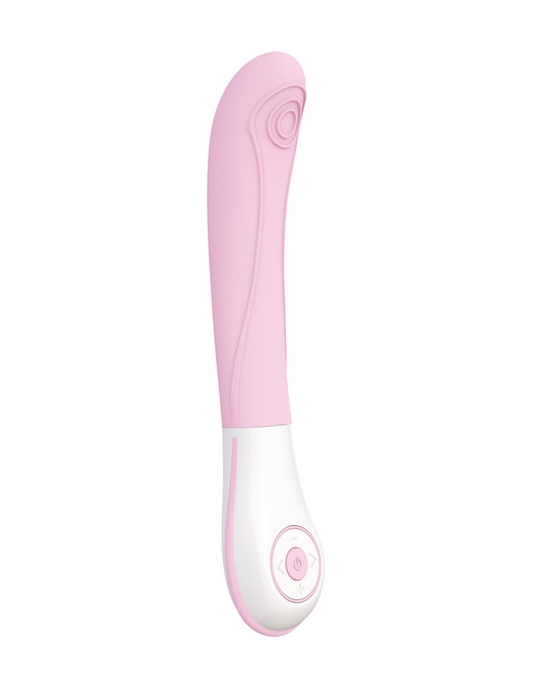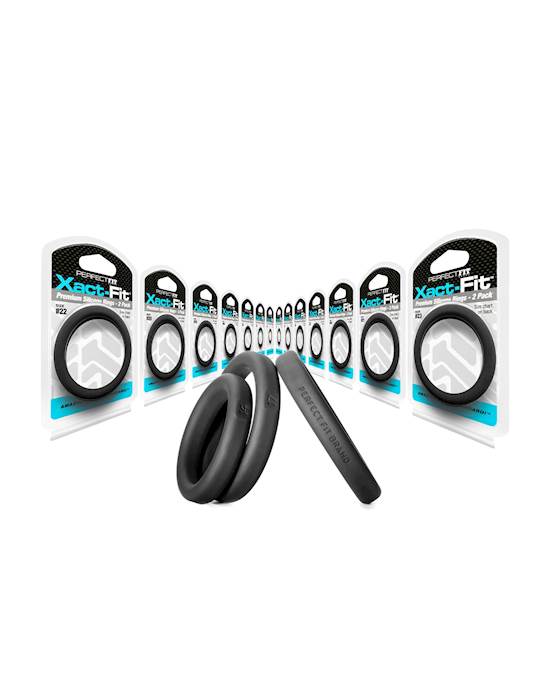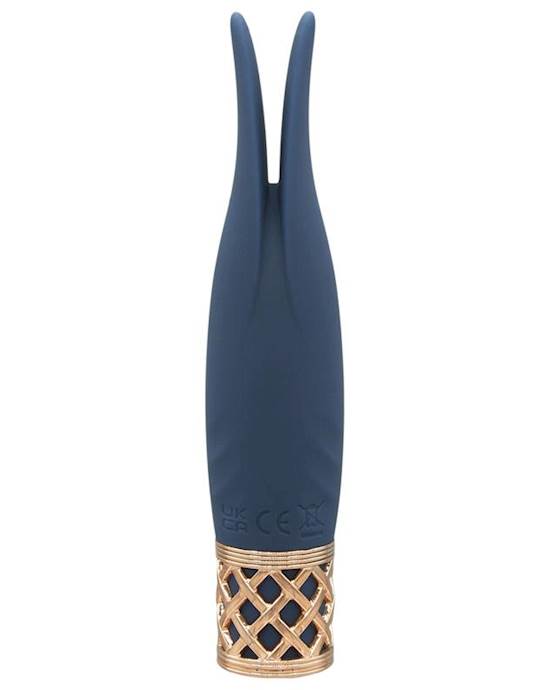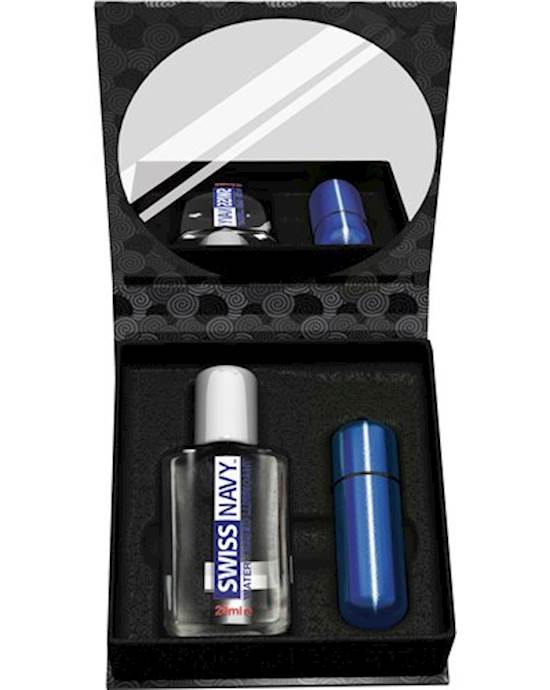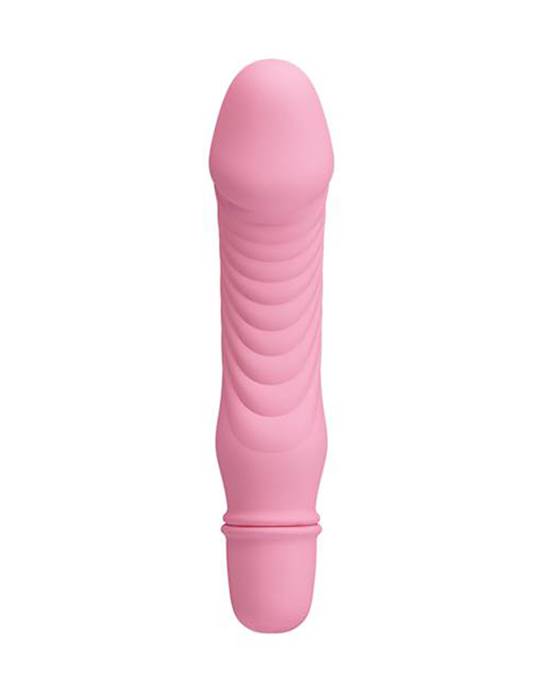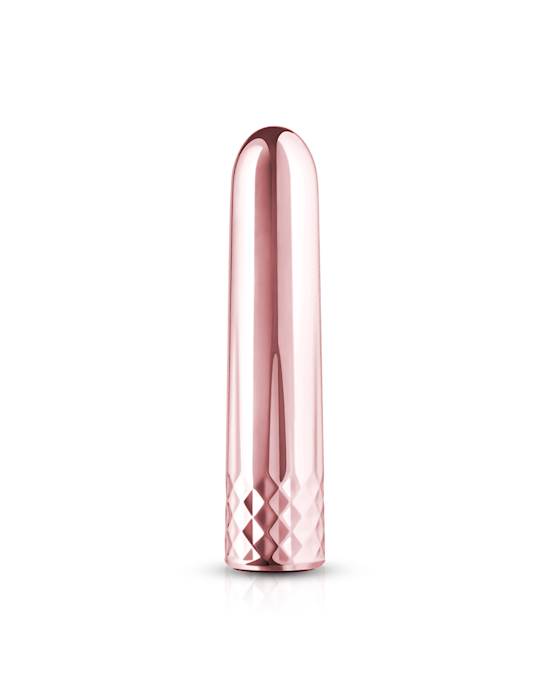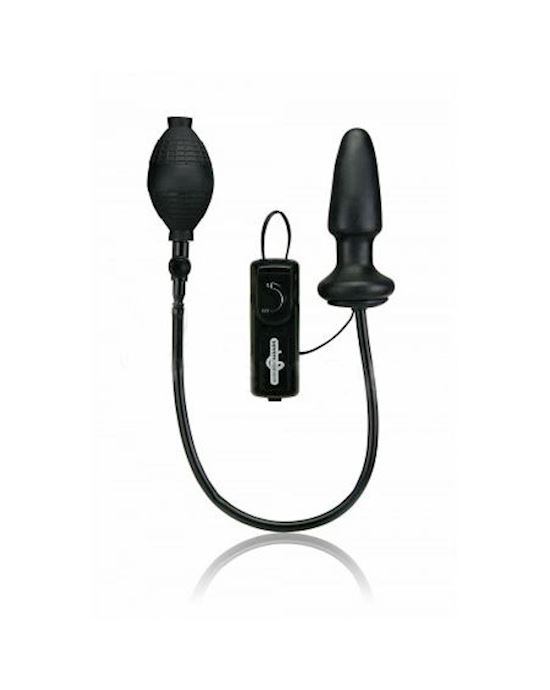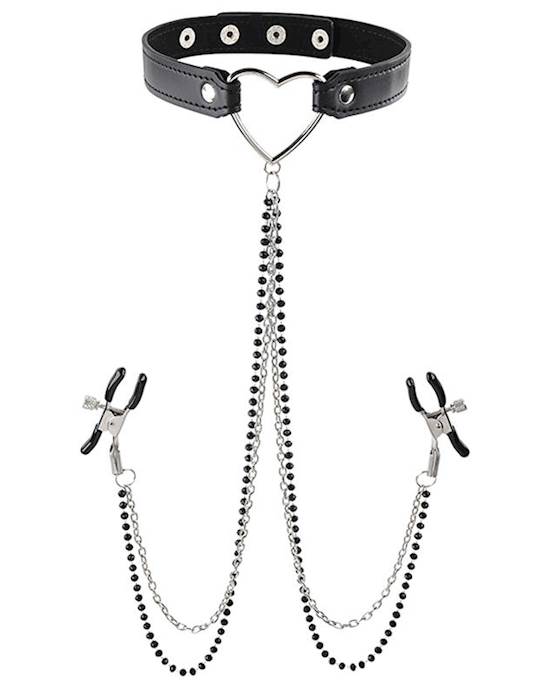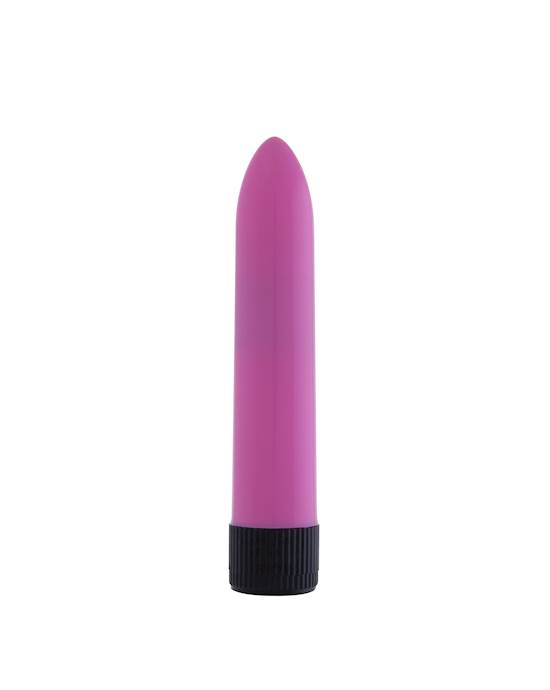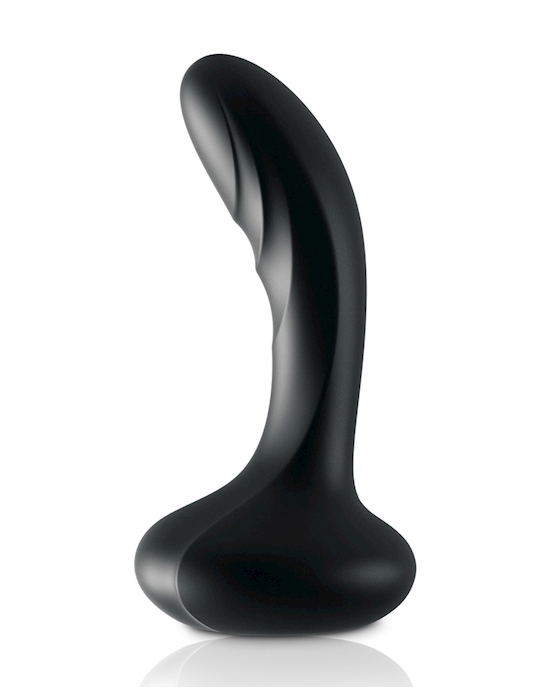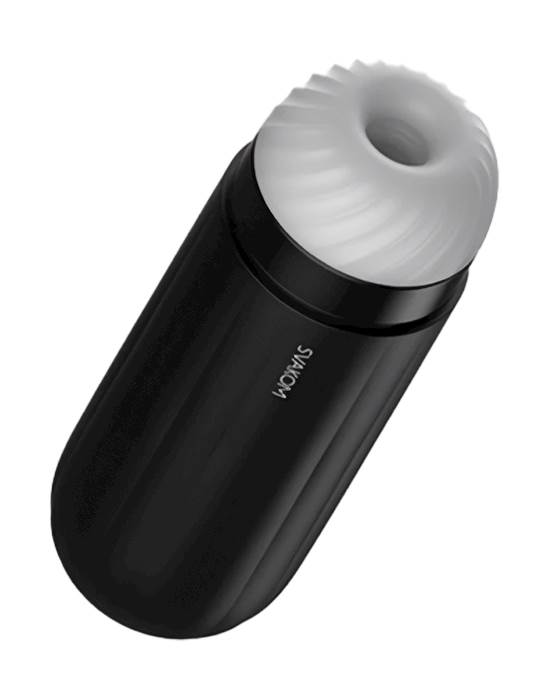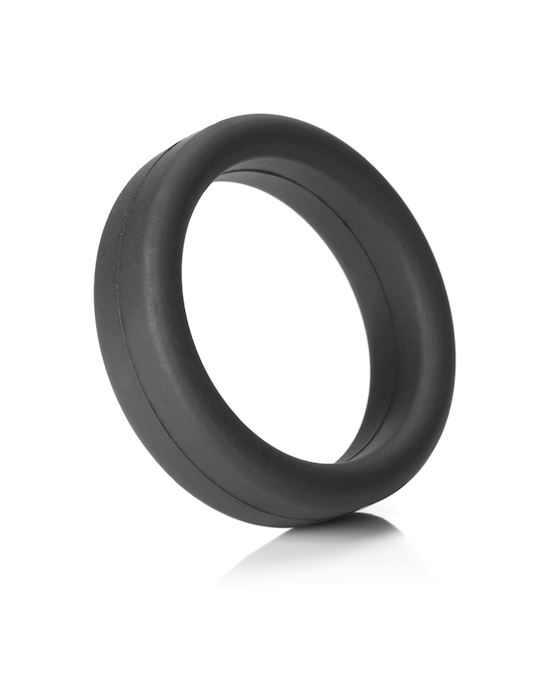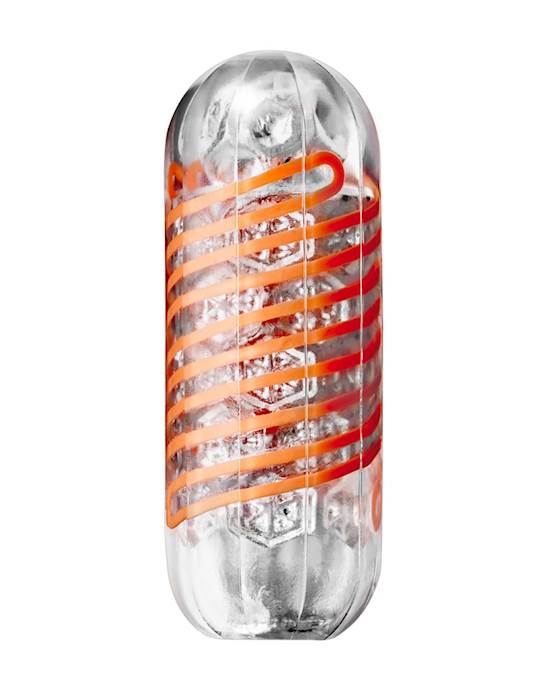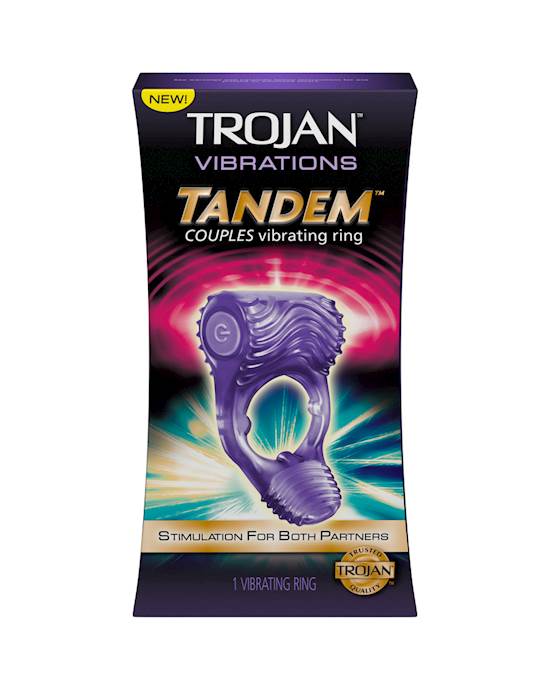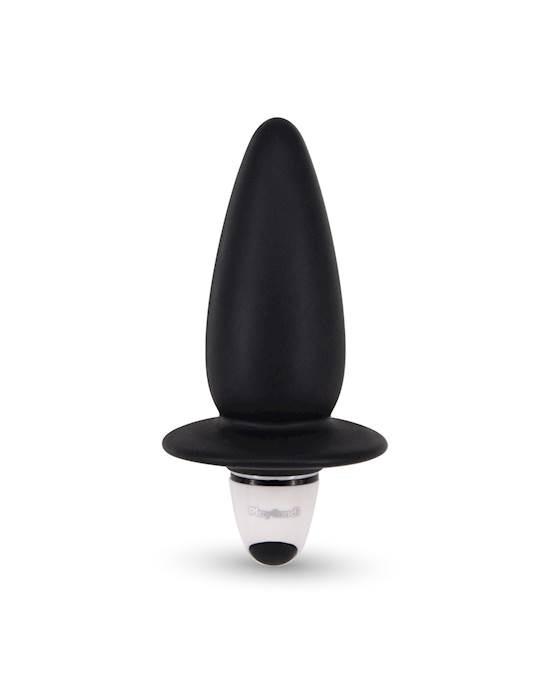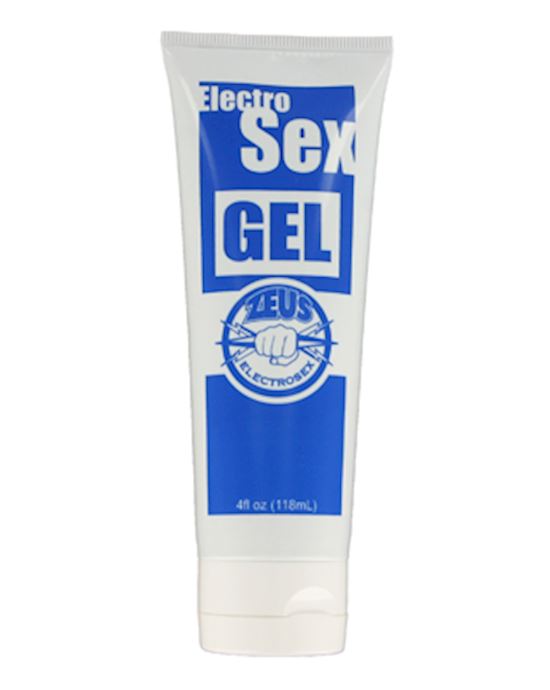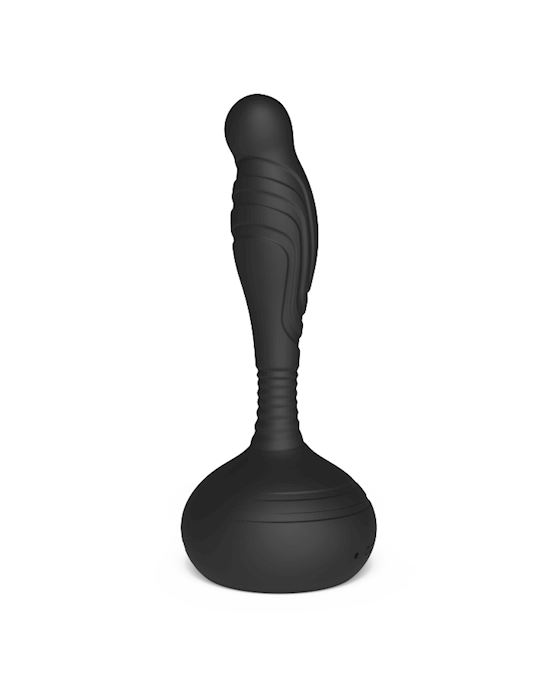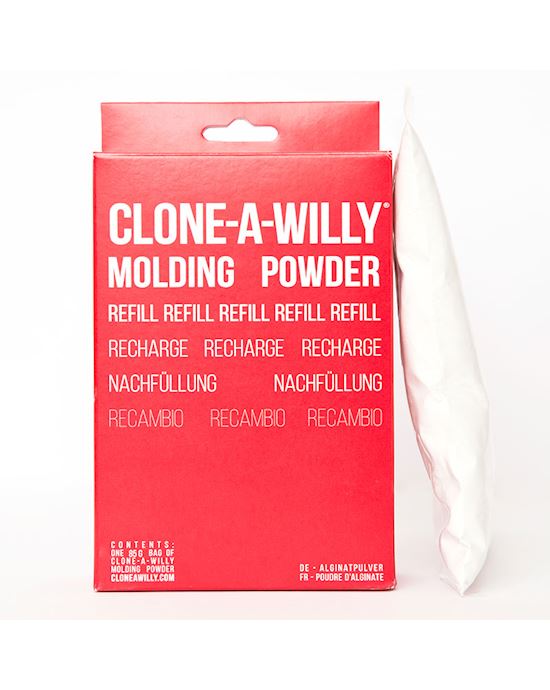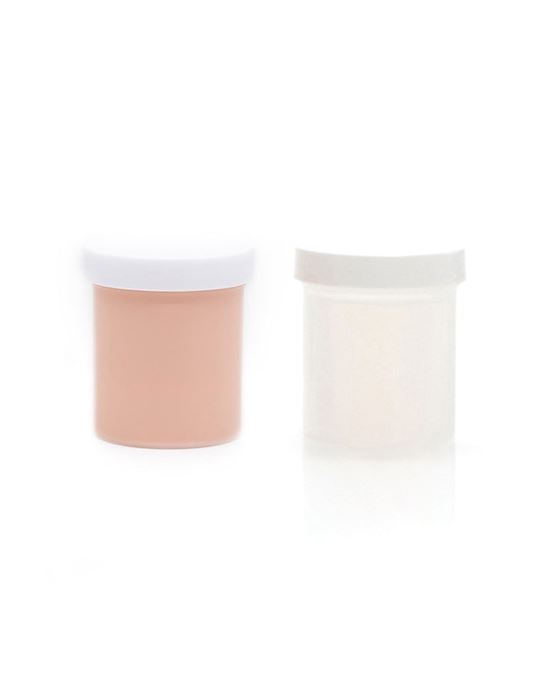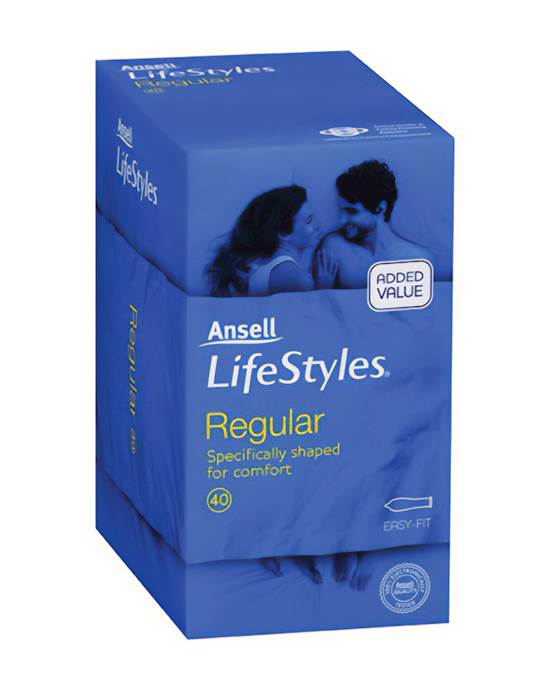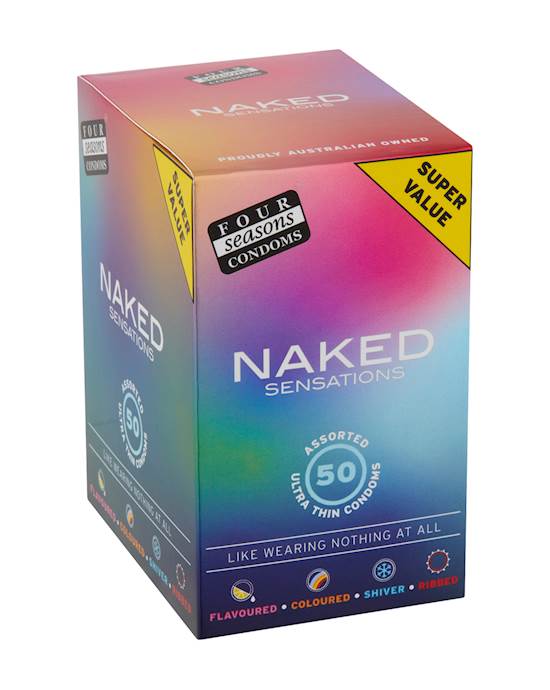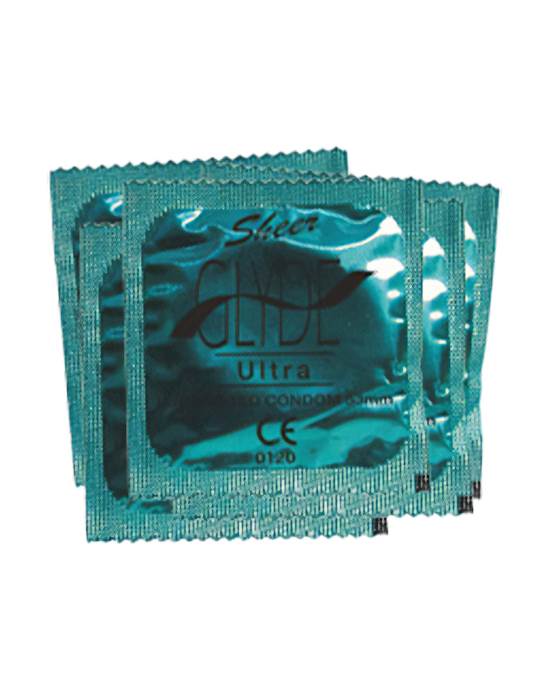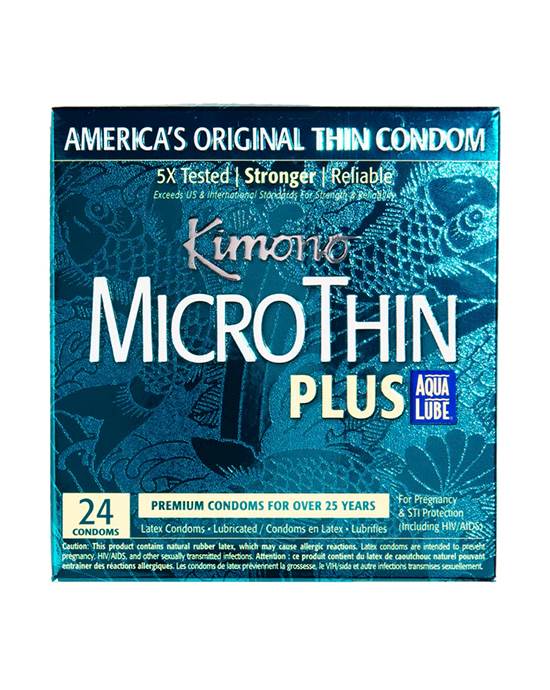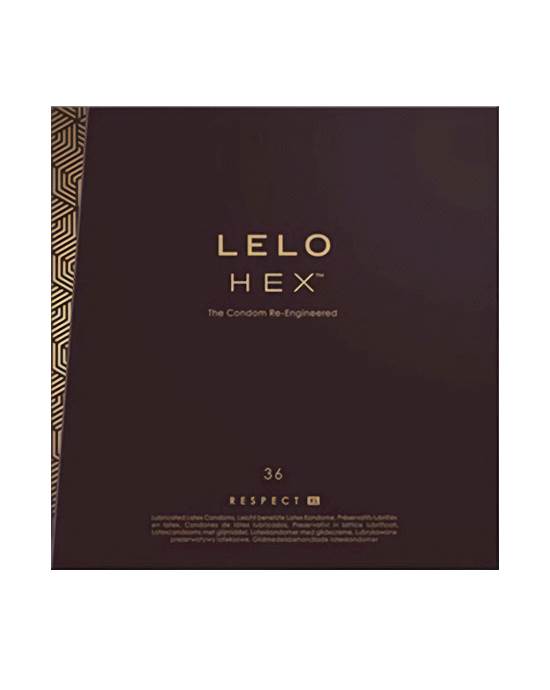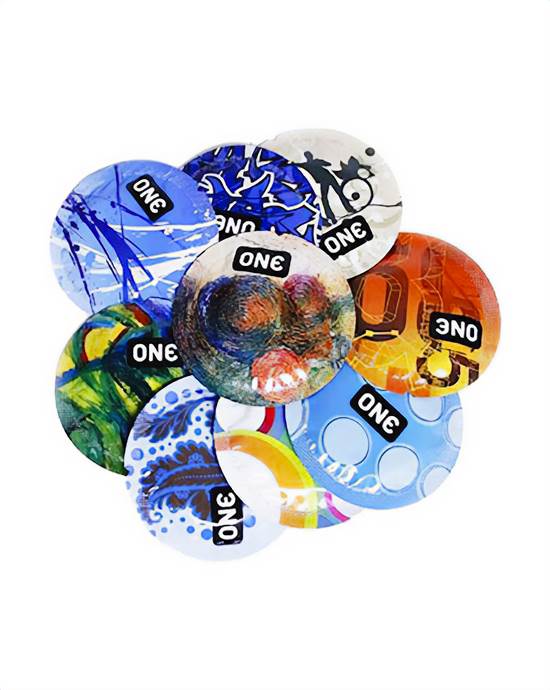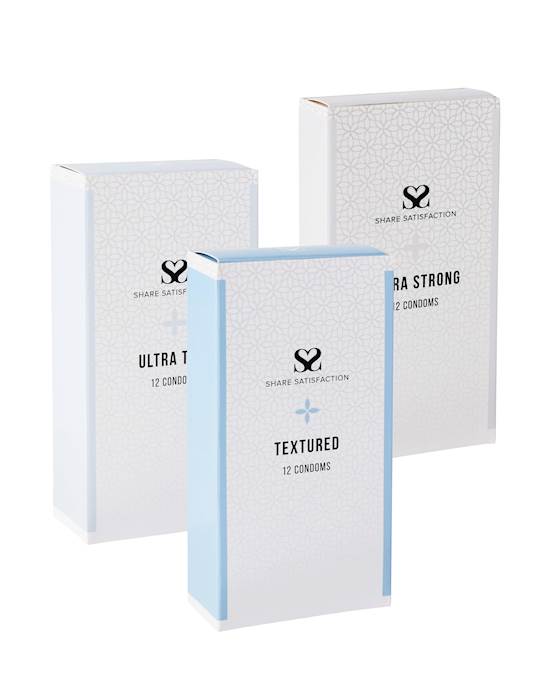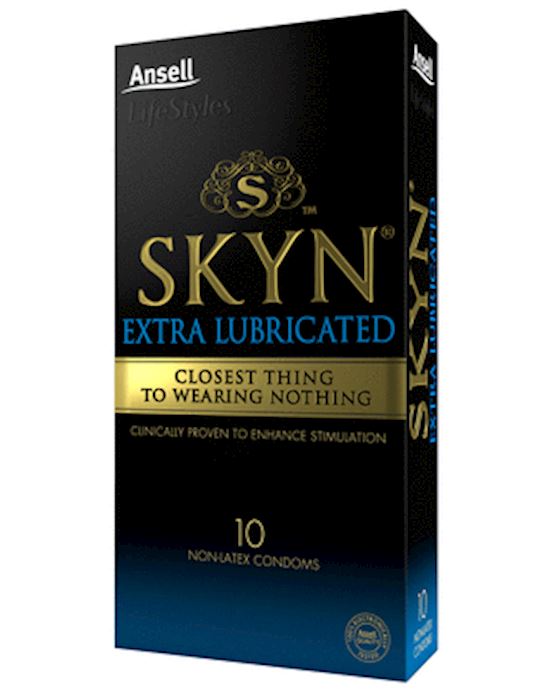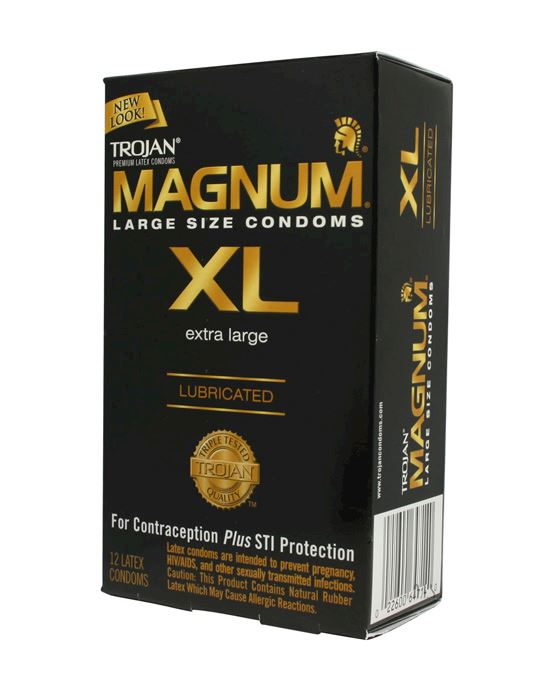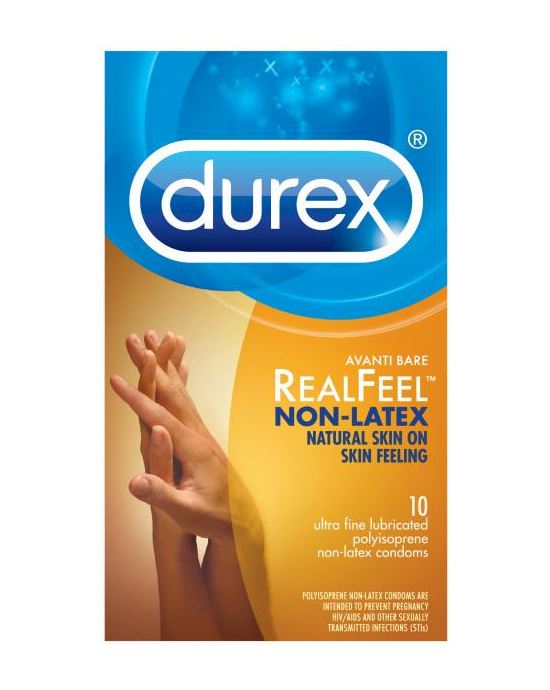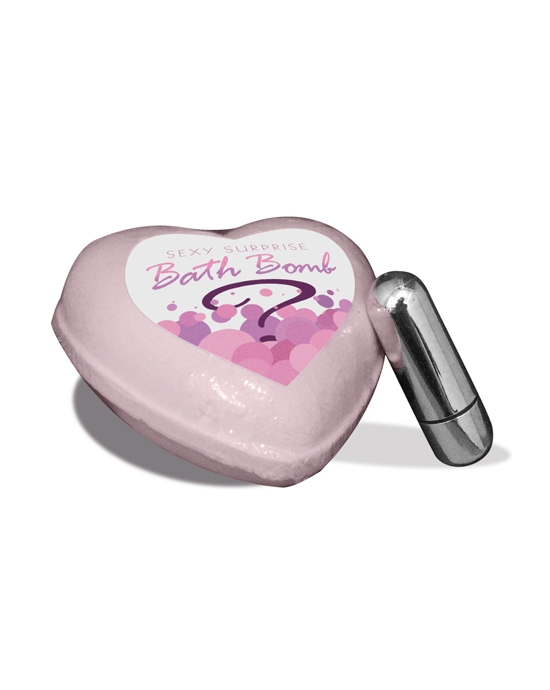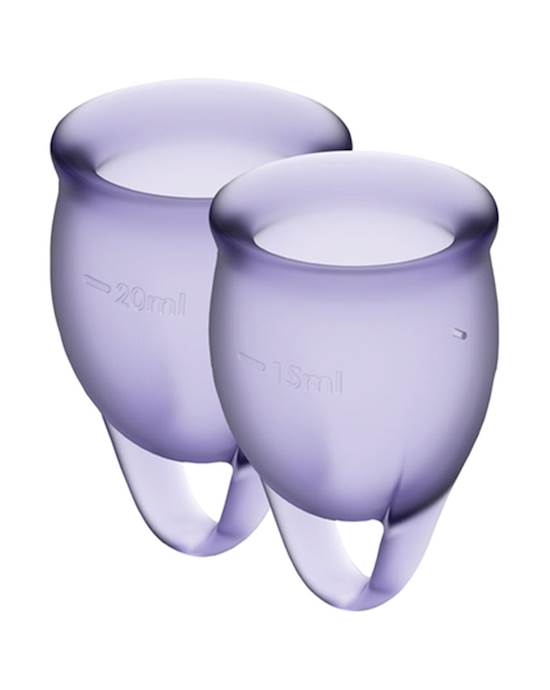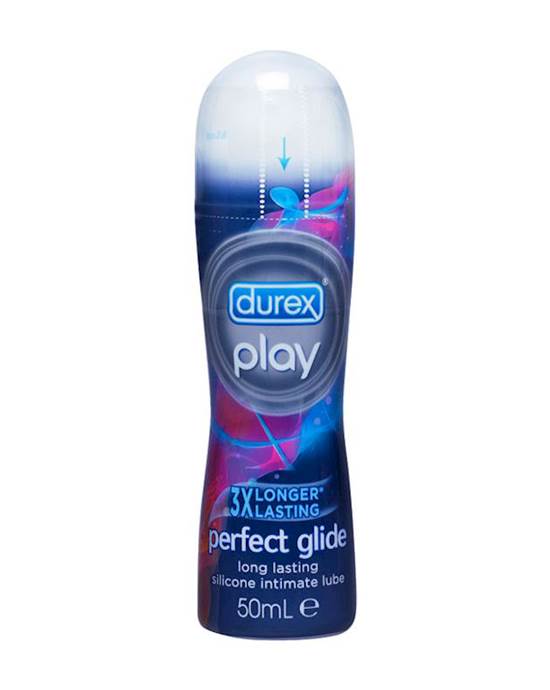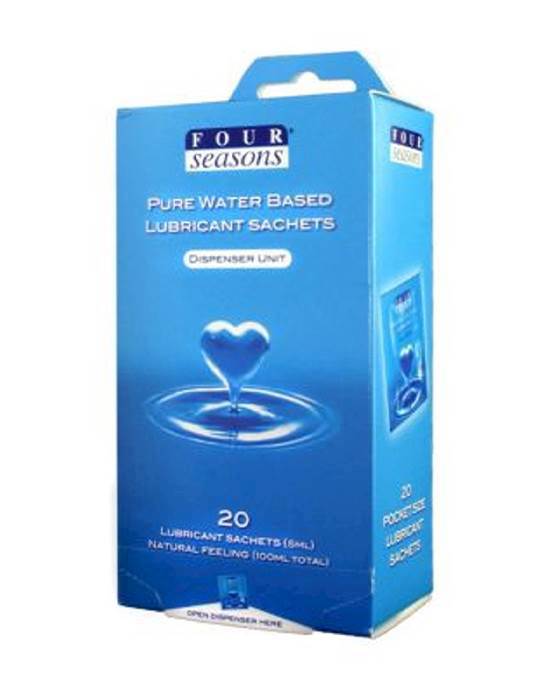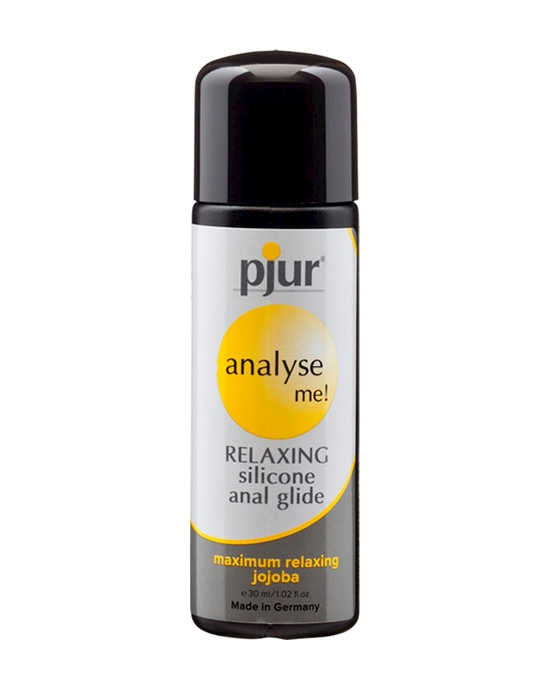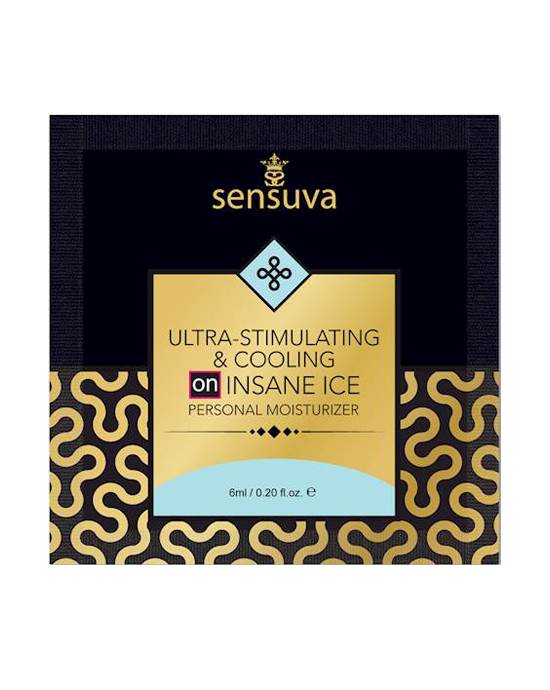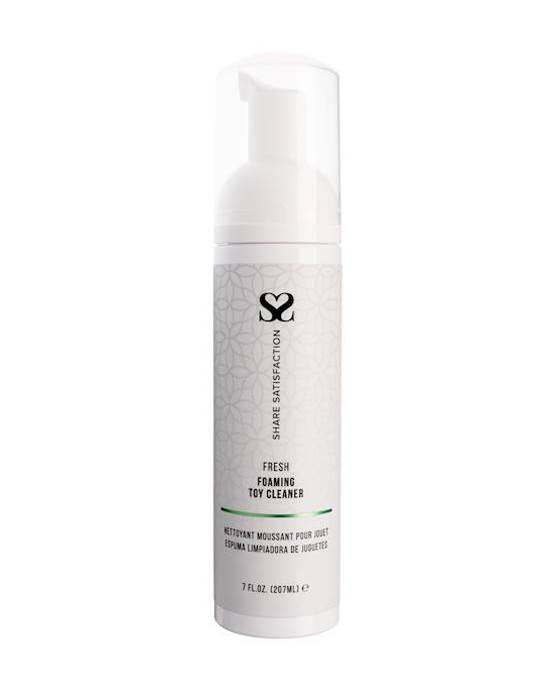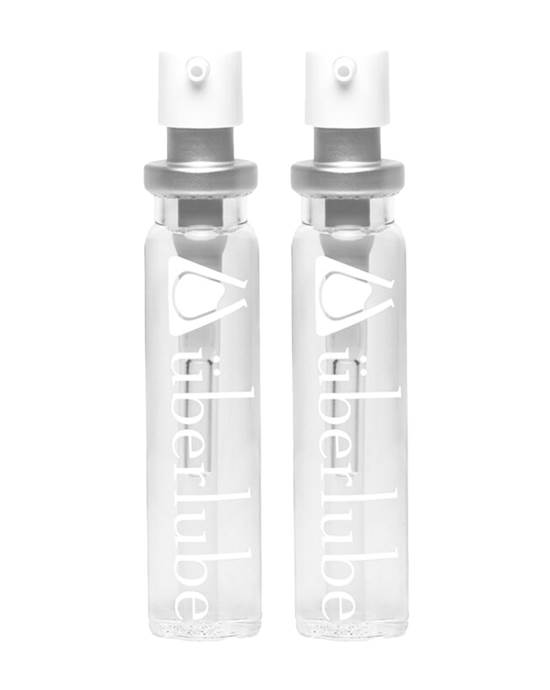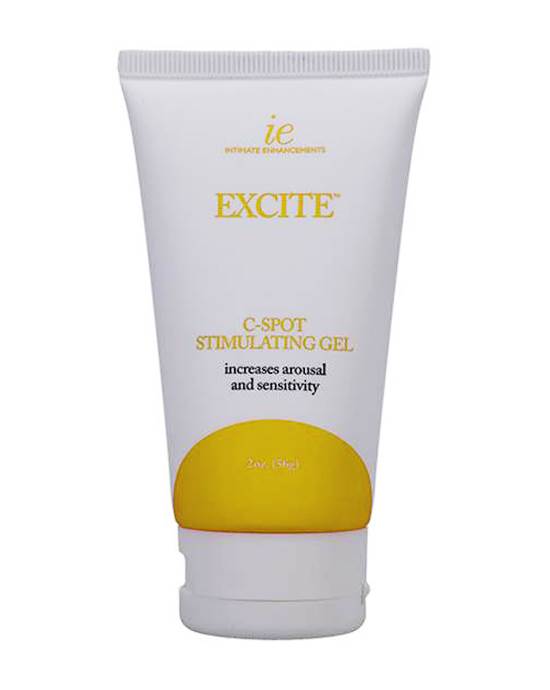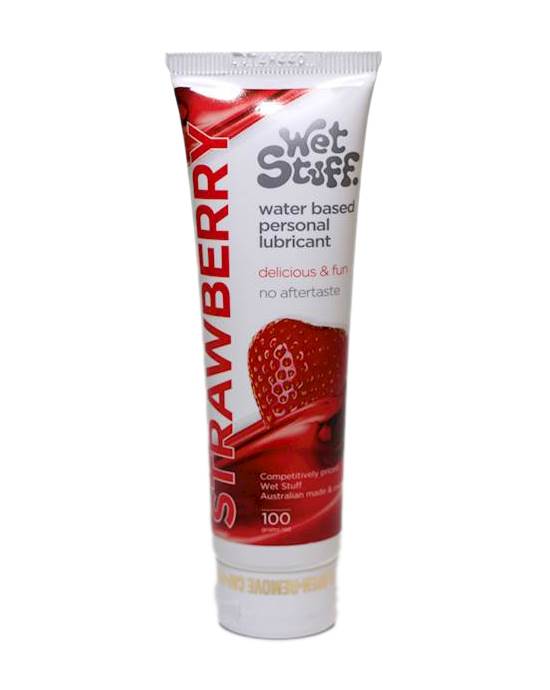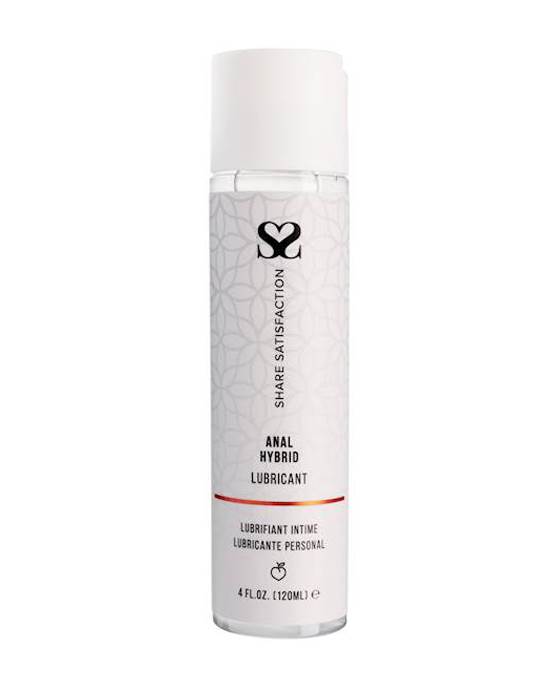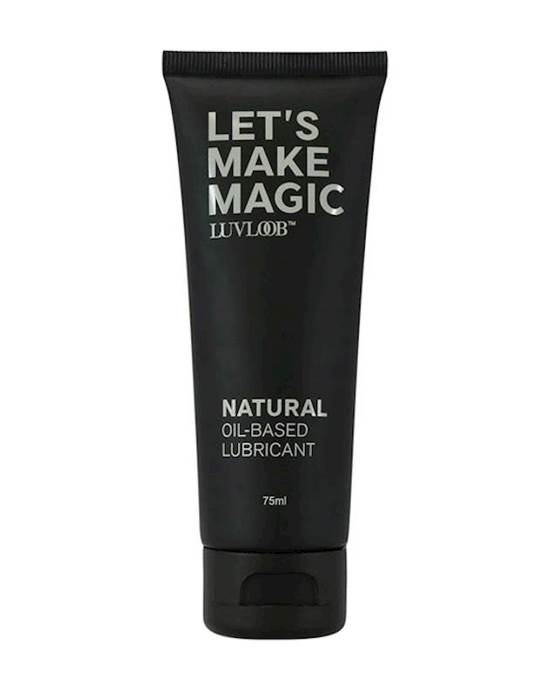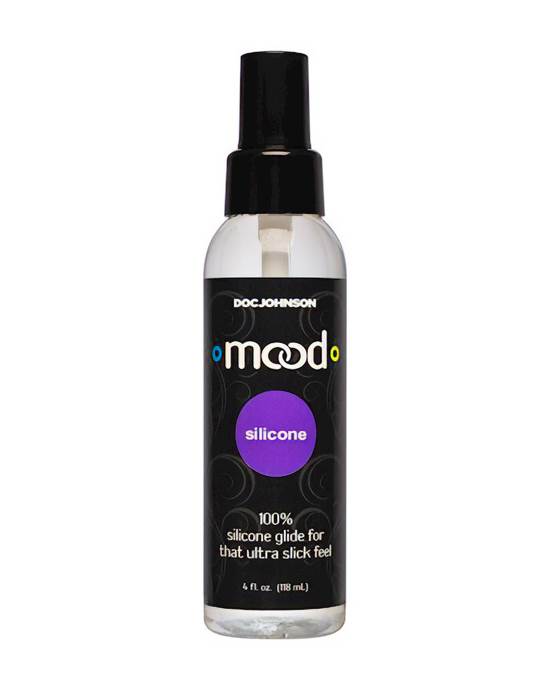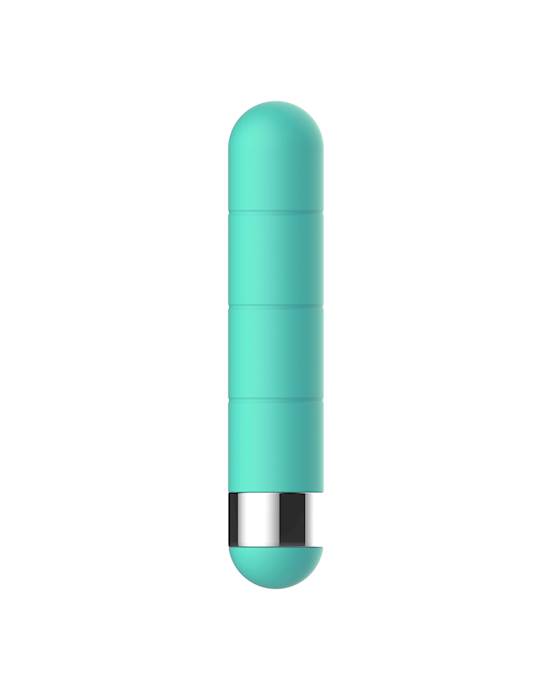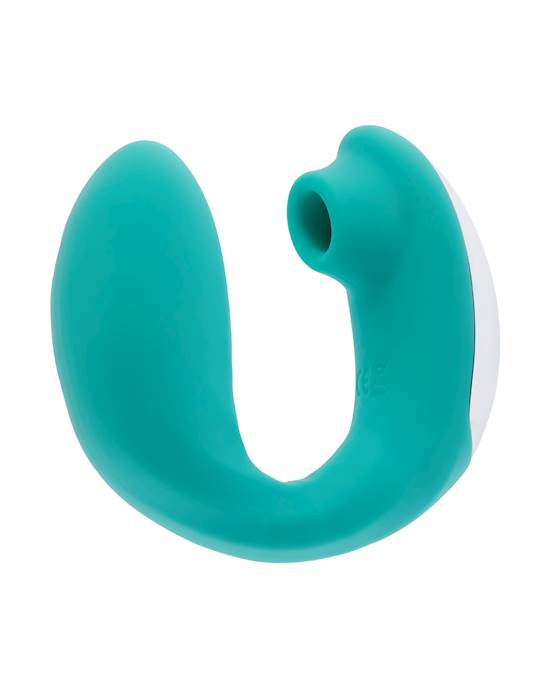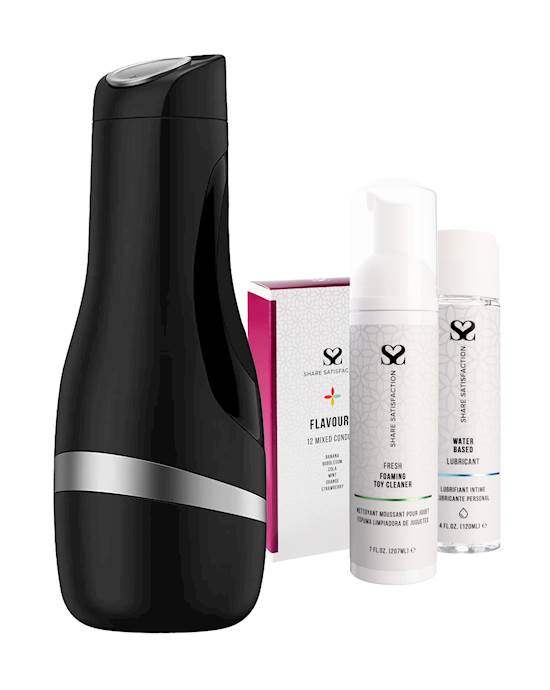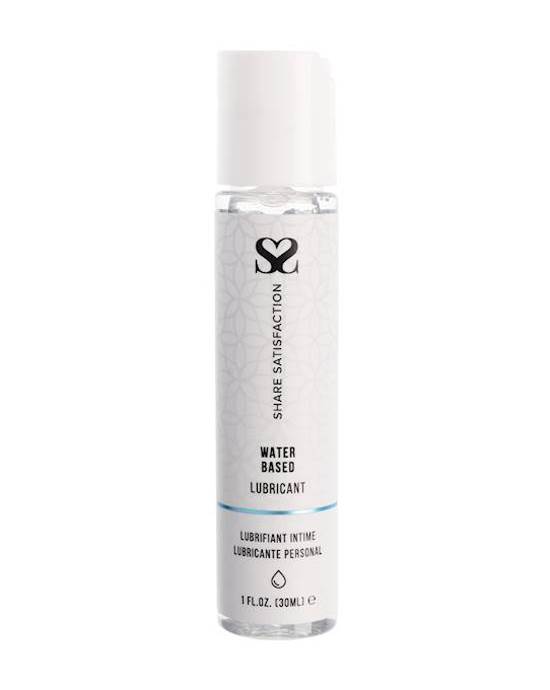Sex Toy Material Guide

Wondering what's in your sex toys? This sex toy material guide will tell you everything you need to know.
Silicone
Silicone is a non-porous material which means it won’t harbour bacteria and can be sterilized between uses. It’s also hypoallergenic meaning it won't irritate the skin. It’s a great body-safe option for sex toys.
As silicone can be sterilized, it is safe to use vaginally or anally. And you can share the toy with others so long as you sterilize it between uses.
Silicone tends to have a soft and smooth surface and will adjust quickly to the temperature of the body. Depending on the formula of the silicone, it may be very flexible, or it might be somewhat rigid. It can be soft and squishy or relatively firm. Or anywhere in between.
You can use water-based or oil-based lubricants with silicone toys.
Some silicone toys may react with silicone lubricant.
Clean your silicone sex toys with a sex toy cleaner and warm water or mild soap and warm water. Ensure that your toy has dried completely before you store it.
Store your silicone toys in a storage bag to keep them protected.
ABS Plastic
ABS plastic is a very common sex toy material that is firm and smooth. As it is non-porous and can be sterilized between uses, it is a body-safe material.
As ABS plastic can be sterilized, it is safe to use vaginally or anally. And you can share the toy with others so long as you sterilize it between uses.
ABS plastic has a firm and smooth surface and is a popular toy for internal or external vibrators. It is also commonly used for g-spot and p-spot massagers. ABS plastic sex toys are rigid with no flexibility.
You can use any type of lubricant with ABS plastic sex toys.
Clean your ABS plastic sex toys with a sex toy cleaner and warm water or mild soap and warm water.
Store your ABS plastic sex toys in a storage bag to keep them protected. It is safe to store your ABS plastic toys together.
PVC
PVC is a porous material meaning that it can harbour bacteria and cannot be sterilized. We recommend replacing your PVC toy every 8-10 months.
As PVC is a porous material, it is not safe to share between partners unless covered with a condom. We also recommend using a condom for anal use.
PVC sex toys may also contain phthalates which can have harmful effects on the body. Phthalates are known to interfere with the body's mechanism for hormone production, known as the endocrine system, and they are linked with developmental, reproductive, brain, immune, and other problems. It is not known whether a condom will protect the body against toxins.
Always look for a phthalate-free PVC.
PVC can be relatively firm making it popular for larger sex toys. The surface may be smooth or textured as it retains its shape well.
Use a water-based lubricant with your PVC sex toys.
Clean your PVC sex toys with a sex toy cleaner and warm water or mild soap and warm water. Ensure that your toy has dried completely before you store it.
Store your PVC toys in a storage bag to keep them protected and keep them separate from other toys.
If you are concerned about toxicity or want a non-porous toy, silicone may be a better option.
Metal
Metal is a non-porous material meaning that it won’t harbour bacteria and it can be sterilized between uses. It’s a great body-safe option for sex toys.
As metal can be sterilized, it is safe to use vaginally or anally. And you can share the toy with others so long as you sterilize it between uses.
Metal is a firm, smooth and heavy sex toy material with no flexibility. It is a popular material for vaginal dildos and anal toys as it is ideal for internal massage of the g-spot or p-spot.
As metal retains temperature, it can be cooled down or warmed up before play to explore a new sensation.
You can use any type of lubricant with metal sex toys.
Clean your metal sex toys with a sex toy cleaner and warm water or mild soap and warm water.
Store your metal sex toys in a storage bag to keep them protected. It is safe to store your metal toys together.
Steel
Steel is composed mostly of iron, often with a small amount of carbon for added strength. Stainless steel includes chromium to make the metal resistant to corrosion or oxidation. Steel sex toys are strong, durable, and will last a lifetime.
Steel sex toys are very firm and often heavier than other toys, so they can be perfect for massage but more difficult to use than lighter toys. They are also perfect for temperature play as they can be warmed or cooled in water and will retain that temperature during play.
Steel toys are far less maintenance than toys made with materials such as silicone. They are very smooth and easy to clean, and they can be stored against each other with no issues. Steel is non-porous, so it can be sterilised completely.
You can use steel or stainless steel toys with any lubricant.
Wash steel toys with the sanitising or anti-bacterial method of your choice - you can even put them in the dishwasher!
If you have an allergy to metals such as chromium or nickel, it may be best to avoid steel toys.
Glass - regular
Glass is a non-porous material meaning that it won’t harbour bacteria and can be sterilized between uses. It’s a great body-safe option for sex toys.
As glass can be sterilized, it is safe to use vaginally or anally. And you can share the toy with others so long as you sterilize it between uses.
Glass is a firm, smooth and heavy sex toy material with no flexibility. It is a popular material for vaginal dildos and anal toys as it is ideal for internal massage of the g-spot or p-spot.
As glass retains temperature, it can be cooled down or warmed up before play to explore a new sensation.
You can use any type of lubricant with glass sex toys.
Clean your glass sex toys with a sex toy cleaner and warm water or mild soap and warm water.
Store your glass sex toys in a storage bag to keep them protected. It is safe to store your glass toys together.
Look out for any cracks or chips each time you use the toy to ensure that it is safe for internal use. If you notice any cracks or chips in the glass, it needs to be replaced straight away. Glass sex toys can be recycled making them an environmentally friendly option.
This supplier has not confirmed that this is borosilicate glass. We recommend choosing a borosilicate glass toy as it has been strengthened and is safer for internal use.
Borosilicate Glass
Glass is a non-porous material meaning that it won’t harbour bacteria and can be sterilized between uses. It’s a great body-safe option for sex toys.
As glass can be sterilized, it is safe to use vaginally or anally. And you can share the toy with others so long as you sterilize it between uses.
Borosilicate glass is strengthened to ensure it is safe for internal use. It is extremely durable and processed to be shatterproof.
Glass is a firm, smooth and heavy sex toy material with no flexibility. It is a popular material for vaginal dildos and anal toys as it is ideal for internal massage of the g-spot or p-spot.
As glass retains temperature, it can be cooled down or warmed up before play to explore a new sensation.
You can use any type of lubricant with glass sex toys.
Clean your glass sex toys with a sex toy cleaner and warm water or mild soap and warm water.
Store your glass sex toys in a storage bag to keep them protected. It is safe to store your glass toys together.
Look out for any cracks or chips each time you use the toy to ensure that it is safe for internal use. If you notice any cracks or chips in the glass, it needs to be replaced straight away.
TPE
TPE is a porous material meaning that it can harbour bacteria and cannot be sterilized. We recommend replacing your TPE toy every 8-10 months. If you see tears or discolouration on the toy, it needs to be replaced. We recommend you examine it closely before each use to ensure it is safe to use.
As TPE is a porous material, it is not safe to share between partners unless covered with a non-latex condom. We also recommend using a non-latex condom for anal use.
It is a non-toxic material and is phthalate-free.
TPE can be made to feel soft and lifelike, or it can be more rigid like silicone. It is a common material for penis masturbators or realistic dildos and vibrators.
Due to the delicate nature of the material, it requires a lot of lubricant to prevent the material from tearing. Use a water-based lubricant with your TPE sex toys.
Clean your TPE sex toys with a sex toy cleaner and warm water or mild soap and warm water. Dry completely before storing.
Store your TPE toys in a storage bag in a cool place out of direct sunlight to keep them protected. Keep them separate from other toys.
If you want a longer lasting, non-porous material, silicone may be a better option.
TPR
TPR is a porous material meaning that it can harbour bacteria and cannot be sterilized. We recommend replacing your TPR toy every 8-10 months. If you see tears or discolouration on the toy, it needs to be replaced. We recommend you examine it closely before each use to ensure it is safe to use.
As TPR is a porous material, it is not safe to share between partners unless covered with a non-latex condom. We also recommend using a non-latex condom for anal use.
It is a non-toxic material and is phthalate-free.
TPR can be made to feel soft and lifelike, or it can be more rigid like rubber and silicone. It is a common material for realistic dildos and vibrators.
Due to the delicate nature of the material, it requires a lot of lubricant to prevent the material from tearing. Use a water-based lubricant with your TPR sex toys.
Clean your TPR sex toys with a sex toy cleaner and warm water or mild soap and warm water. Dry completely before storing.
Store your TPR toys in a storage bag in a cool place out of direct sunlight to keep them protected. Keep them separate from other toys.
If you want a longer lasting, non-porous material, silicone may be a better option.
TPU
TPU is a soft, non-toxic material that is porous and cannot be sterilized.
TPU is a thermoplastic polymer similar to TPE and TPR. This material can be made to feel soft and flesh-like or more rigid, making it a popular choice for realistic dildos. As TPU is a porous material and can harbour bacteria, we recommend using a non-latex condom if your toy is intended to be used anally or shared between partners.
TPU toys need to be replaced every 8-10 months. If you see discolouration or any damage on your TPU toy it is not safe to be used.
We recommend cleaning your TPU sex toys with a sex toy cleaner or mild soap and warm water. Dry completely before storing in a storage bag in a cool place out of direct sunlight to keep them protected. Keep them separate from other toys.
If you want a longer-lasting, non-porous material, silicone may be a better option.
Rubber
Rubber is generally made from the latex of the rubber tree and can be processed to create a soft, elastic material commonly used to make dildos. Synthetic rubber is also common, and it usually does not contain latex.
Toys made from rubber can also be called ‘jelly’ or ‘gel’ toys.
Rubber can be very soft and pliable, but this flexibility is often achieved using highly toxic phthalates. Rubber toys are almost always porous, making it impossible to sterilise them.
Rubber toys can have a strong smell associated with them, and can cause an allergic reaction if they contain latex. Some suppliers may claim their rubber products are body-safe, meaning that they do not contain phthalates, plasticizers, or latex, but it is difficult to confirm that every product fits these criteria.
If you plan to use a rubber toy, we recommend using a non-latex condom with it and only using a water-based lubricant.
Store rubber toys separately from any other toys, as the chemicals in them can degrade over time and ‘melt’.
If you are concerned about porosity or toxicity, a silicone toy may be a better option.
Polycarbonate
Polycarbonates (PC) are a group of thermoplastic polymers which are easily moulded with heat. They are incredibly strong, light, and can be made transparent.
Similar to ABS plastic, PC is most commonly used in the hard outer casing of vibrators or toys such as penis pumps. Thanks to its solidity and strength, PC is often used as an alternative to glass.
PC plastics can sometimes contain a chemical called BPA which may be harmful when used internally, though most PC toys are intended for external use only. You can use any lubricant with PC sex toys and can clean them with a sex toy cleaner and warm water, or mild antibacterial soap and warm water.
Store your PC plastic sex toys in a storage bag to keep them protected. It is safe to store them together.
Polypropylene
Polypropylene (PP) is a man-made thermoplastic polymer, used commonly in food containers, clothes, and many other common items.
Because it is such a strong plastic PP is commonly used in place of ABS or other hard plastics in sex toys such as a vibrator or stroker casings. It also has a very high heat tolerance, so may be used in toys that have heating functions.
It is generally considered body-safe because it is non-porous, phthalate-free and BPA-free.
It is safe to use any lubricant with PP sex toys.
Clean your PP sex toys with a sex toy cleaner and warm water or mild soap and warm water.
PP sex toys should be kept in a storage bag out of the sun. It is safe to store them together.
Wood
Wood can be used to create dildos of many shapes and sizes. It tends to be a lighter alternative to metal or glass while still retaining the firmness of such sex toys. The lightweight quality of wooden dildos means they can be great for those with limited ranges of movement or disabilities.
Wood is naturally a porous material, but wooden sex toys are usually finished with non-toxic varnishes that combat this, making them non-porous and easy to clean. Always check that a wooden sex toy has been sealed.
Wooden sex toys should be cleaned with mild soap and warm water or a damp cloth. Wooden toys may be vulnerable to being scratched or damaged, so they should not be scrubbed. Scratches can allow bacteria to grow and make the toy unsafe. Stop using your wooden sex toy immediately if you see cracks in the coating or signs of damage. They should be stored in a toy bag to keep them in the best quality possible.
Wax
Wax is commonly found in massage candles or drip candles intended for wax play, though the type of wax used in these varies. Massage candles can be used to drip oil-like wax onto the body and massaged in, while drip candles are intended for slightly more intense heat.
Soy wax is commonly used for massage candles as it has a melting point of 46-57 degrees Celsius and contains natural oils that are perfect for massage. Paraffin wax is typically used for drip candles as its melting point can be slightly higher (47-65 degrees Celsius) and it can create a pleasurable burning sensation.
Paraffin wax can be cleaned off the body with warm mineral oil, massage oil, or olive oil by holding a saturated cloth or cotton pad to the wax until it has softened, then wiping it away.
Leather
Leather is obtained from the tanning or chemical treatment of animal skins and hides. The most common leathers come from cattle or sheep but leather may also be made from pigs, goats or alligators.
Leather is a very common material in the world of BDSM and many bondage tools and restraint items are made from this material.
It can be treated to be smooth and soft, firm or highly textured. It can tease and tickle the skin or it can cause pain if it is spanked hard against the body.
Clean your leather with a damp cloth and allow it to air dry naturally. Store your leather out of direct sunlight.
Suede
Suede is made and treated similarly to normal leather, but instead of using the outer layer of hide the leather is split and the underside is used. This gives the leather a soft, fuzzy texture known as the ‘nap’.
Suede is thinner and more delicate than most forms of leather, but it is still very durable. This makes it popular for clothing, footwear, and BDSM toys such as whips or restraints.
The soft texture makes suede comfortable to wear, but it is not a very breathable material.
Suede requires more careful care than other forms of leather due to its texture and thinness. The nap can collect dust and dirt, so requires brushing with a soft leather brush. A suede eraser can be used to remove stains. Suede is not waterproof and should be kept dry at all times.
Faux Leather
Faux leather refers to any product that mimics leather but is not made with animal hide. It is commonly made by laminating a textile base with a plastic coating such as PU or PVC. The process to manufacture faux leather is far easier than genuine leather, which makes it more affordable.
Faux leather is often, but not always, vegan. Some faux leathers can be made using leather scraps or a base of the fibrous layer of cowhide. These forms of faux leather are often called bonded or bi-cast leather, so avoid these if you are looking for a vegan product.
Faux leather is often used to create affordable bondage gear such as restraints, masks, collars, and fetish garments. It is not very breathable.
The maintenance and cleaning of faux leather is much easier than genuine leather. Most faux leathers can simply be wiped down and do not require leather conditioner or added care. The downside, however, is that faux leather is not as durable as real leather and can be prone to cracking or tearing.
We recommend storing faux leathers in a cool, dry place to avoid any sun damage.
Vinyl
Vinyl is usually used as a name for faux leather made from PVC. Faux leather is an inexpensive alternative to genuine leather. It is versatile, affordable, and easy to clean, but is not as durable or long-lasting as genuine leather.
If a sex toy such as a dildo is labelled as ‘vinyl’ it usually means that it is made out of PVC. PVC/vinyl is porous and cannot be fully sterilised. Vinyl toys should be used with a condom if shared with partners or used anally and replaced every 8-10 months.
PVC or vinyl toys are likely to contain harmful phthalates used as softeners. Vinyl products are not toxic on their own, but the use of phthalates can make them unstable and unsafe for use. It is not known whether a condom will protect against these toxins.
If you are concerned with toxicity or want a non-porous toy, silicone may be a better option.
PU
PU (polyurethane) is faux leather made from plastic that is designed to look and feel similar to real leather.
PU is a low-cost, vegan option that is used for bondage tools and clothing. Many impact tools, restraints and clothing items are made of this material.
It can be made to be relatively soft and can be made into many colours and styles.
It doesn’t absorb water making it easy to clean. Follow the instructions of your product for cleaning.
PU wears quickly and will not last as long as real leather.
Latex
Latex is derived from a substance collected from the rubber tree, which is then processed into latex rubber.
When treated and processed to be used in the production of condoms, latex can be made incredibly thin and still retain its resilient, tear-proof qualities. Latex condoms should not be used with oil-based lubricant as this can degrade the latex and increase the risk of breakages.
Latex is also commonly used for fetish wear such as dresses, masks, or gloves. Latex creates a sleek, skin-tight look, but it can be high maintenance. Latex clothing can be difficult to put on or take off due to the rubbery texture, so talcum powder or lube is commonly used to aid in this. Latex clothing can be polished using specialised latex polish or silicone lubricant, which creates the shiny, wet look that latex is known for.
Latex clothing should be hand washed with lukewarm water and a latex-appropriate soap and airdried. It needs to be stored in a garment bag and hung in a dry, dark place.
Polyester
Polyester is a generalised term for any fabric or textile, which is made using polyester yarns or fibres. It is a shortened name for synthetic, man-made plastic.
It is a common material for clothing and bondage accessories like blindfolds as it is resistant to wrinkling or stretching.
Polyester is lightweight and quick-drying and can be made to feel relatively smooth and silky. However, it is not a breathable fabric.
Follow the instructions of your product for cleaning.
Nylon
Nylon is an umbrella term for synthetic materials that are processed into different shapes and textures for various uses.
Nylon is a plastic that is commonly used for lingerie and bondage accessories like rope. It is lightweight, strong and resistant to shrinkage.
It is generally quite soft and silky and is shinier and stretchier than polyester.
Follow the instructions of your product for cleaning.
Hemp
Hemp is used for a wide variety of products and is popular thanks to its strength and versatility. It is a highly sustainable fibre due to its fast-growing and biodegradable nature.
When used in clothing, hemp is strong, absorbent, durable, and insulating. Hemp fabric doesn’t stretch out of shape like some other fabrics, making it perfect for heavy-duty products.
Hemp can also be used to make incredibly strong rope, making it perfect for forms of bondage – though hemp rope may not be as soft as other options. Hemp fibre is generally mould resistant and tends to be an affordable rope option.
Hemp fabrics should be washed with cold water to preserve their colour. Refer to washing instructions on the item for further information.
Cotton
Cotton is a term that refers to any material made from the fibres of the cotton plant.
Cotton is commonly used in clothing and has been a popular textile for centuries. It is very versatile; it can be woven or dyed to create a variety of fabrics such as denim or t-shirt material. Cotton is often combined with other fibres or textiles to create cotton blends.
Cotton may be used in lingerie or bondage gear, especially rope. Cotton rope is softer than many other varieties while still being strong and durable.
When used in lingerie or clothing cotton is soft, breathable, and fast drying. Follow the instructions of your product for cleaning.
Silk
Silk is a fibre produced by silkworms that can be turned into textiles of many kinds. One of the most popular fabrics made from silk fibres is ‘silk satin’, which is a lightweight, opaque form of silk often used in lingerie.
Silk is a very strong, durable fibre. It is usually quite light and very absorbent, making it a naturally moisture-wicking fabric. It is breathable, naturally hypoallergenic, and has temperature regulating properties. It feels silky and soft but isn’t slippery. These properties make silk a fantastic material for lingerie.
Due to the long and complex process of producing silk, it is often an expensive material.
Silk can have more static build-up than other fabrics but hanging a silk product separate from other laundry to dry can help with this.
Silk can lose its strength when wet, so needs to be gently hand washed and hung to air dry. Follow further instructions on your garment when cleaning and storing.
Spandex
Also known as elastane, spandex is an exceptionally stretchy and elastic fibre often used to make form-fitting athletic wear or lingerie. Spandex is an expensive fibre, so it is commonly blended with other fibres to make the end material more cost-efficient.
Spandex is generally comfortable and moisture-wicking, making it perfect for lingerie, however, it is not a breathable material.
High-quality spandex items can be hand-washed in cold water and left to air dry to ensure they remain in top condition. Follow washing instructions on the item.
Satin
Satin can be made from a variety of fibres or fabrics as it refers to the specific weaving technique used. Satin is known for a luxurious, glamorous look, and is commonly used in lingerie or nightgowns. Thanks to its beautiful, sleek look, satin is an incredibly popular material. It can be produced in a wide range of qualities, which makes it a generally affordable material.
Satin is not to be confused with silk. Silk refers to the base fibre that the material is made from, whereas satin refers to the way those fibres are woven.
Satin items should generally be hand washed or machine washed on a delicate setting. Follow washing instructions on the item.
Neoprene
Neoprene is commonly known as the material that wetsuits are made from, but when used in adult products it is found most often in bondage wear such as cuffs or masks. Neoprene is flexible and lightweight, making it comfortable and easy to wear.
Neoprene is water resistant, but not breathable. It is generally a very affordable material.
Neoprene items can be hand washed to ensure they remain in top condition, but it is generally safe to machine wash on a normal cycle. Refer to washing instructions on the item for further information.
Faux Fur
Faux fur is any fur-like material that is not made from real animal fur. Faux fur is often made from blends of acrylic polymers and is far more affordable than real fur. High-quality faux fur can be just as luxurious and durable as real fur.
Faux fur is commonly used in toys such as tails or furred handcuffs. It is not very breathable but is usually soft and comfortable to wear.
Handwashing is usually the best option to ensure your faux fur items remain in top condition. It can also be brushed when dry to untangle any knotted fur. Refer to cleaning instructions on the item for further information.








